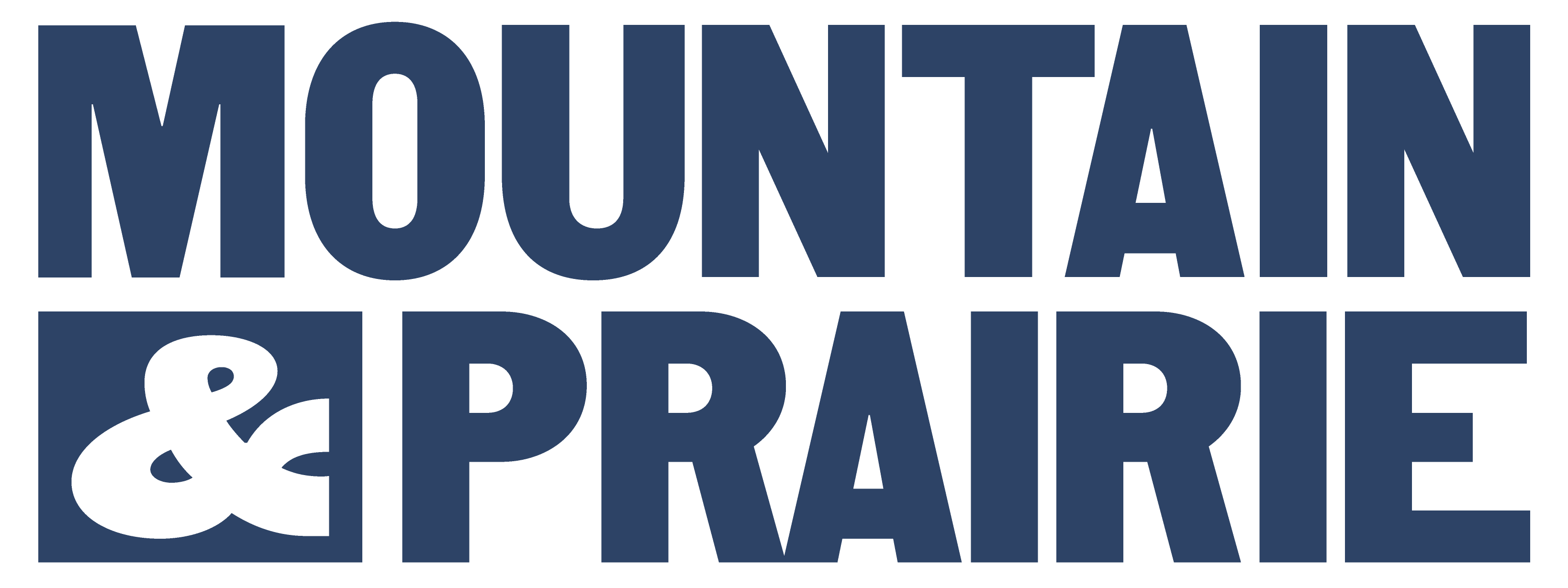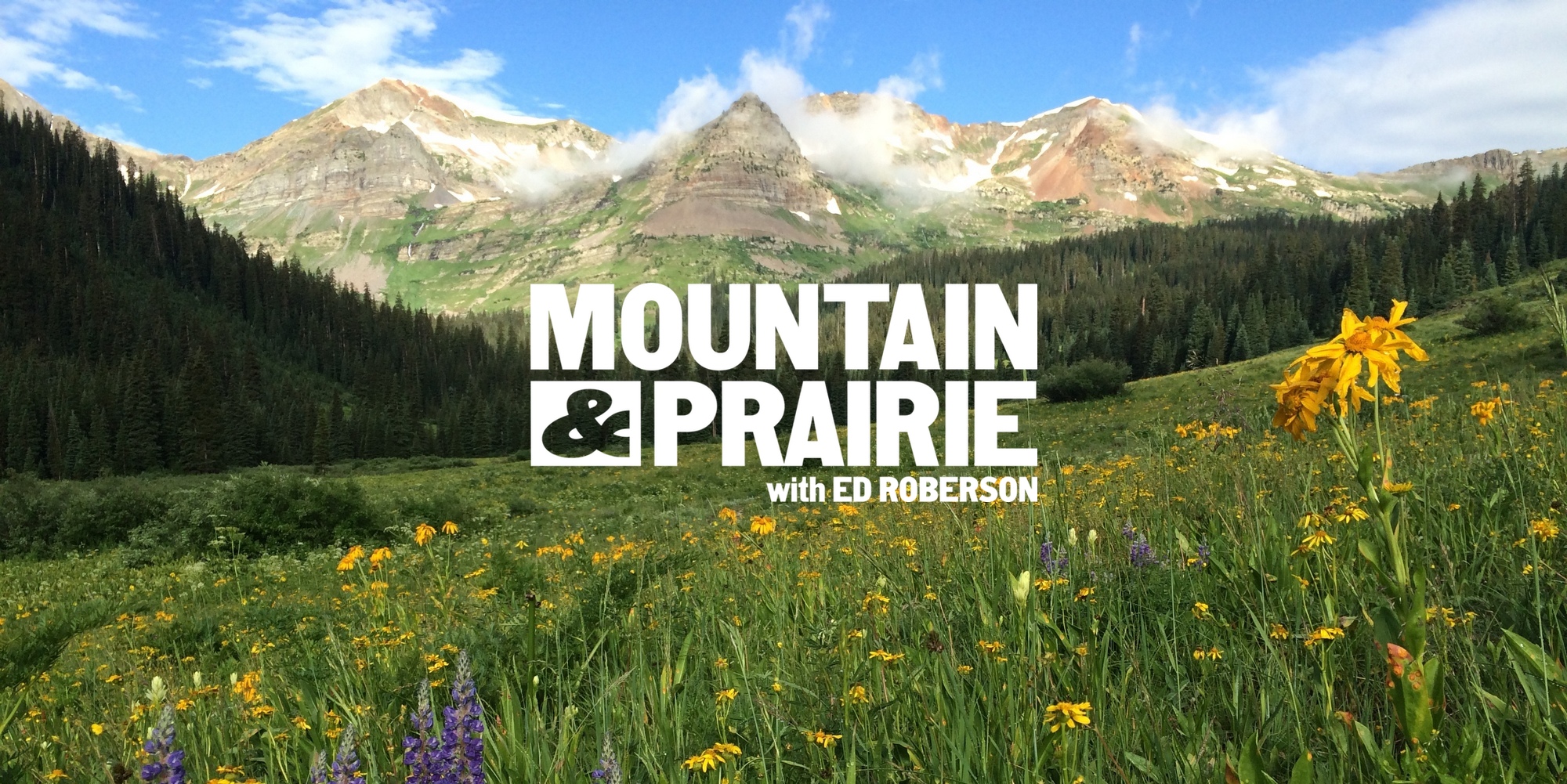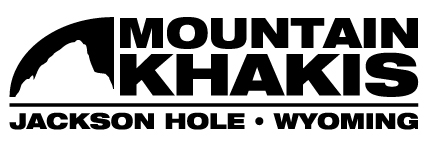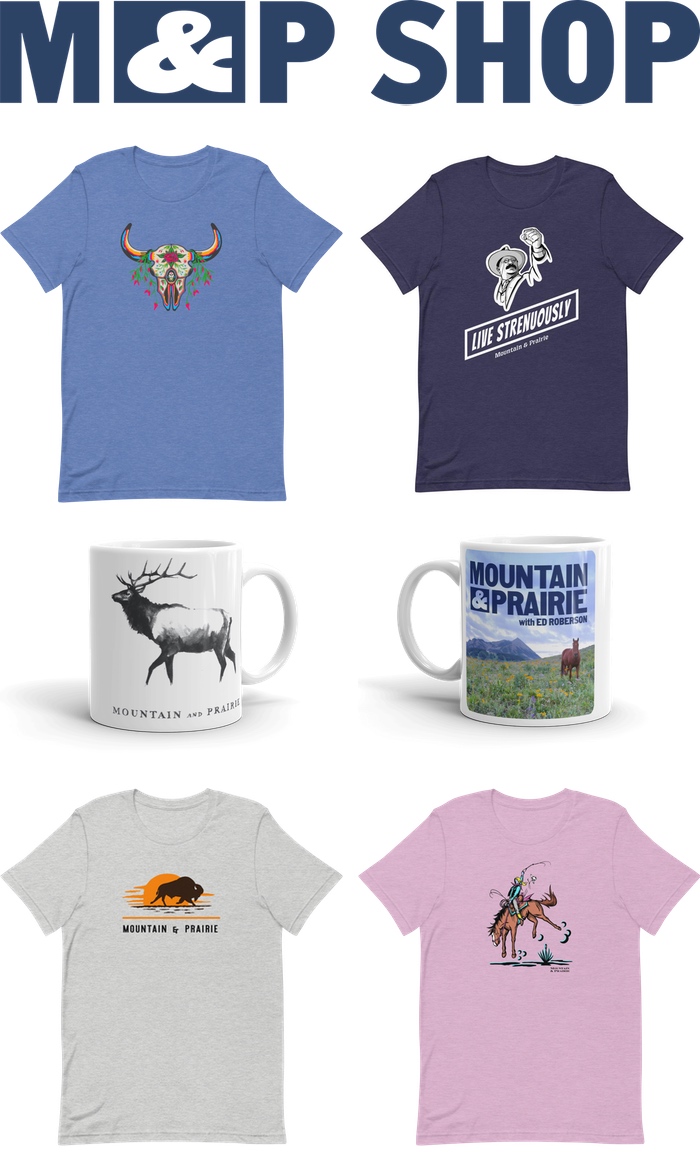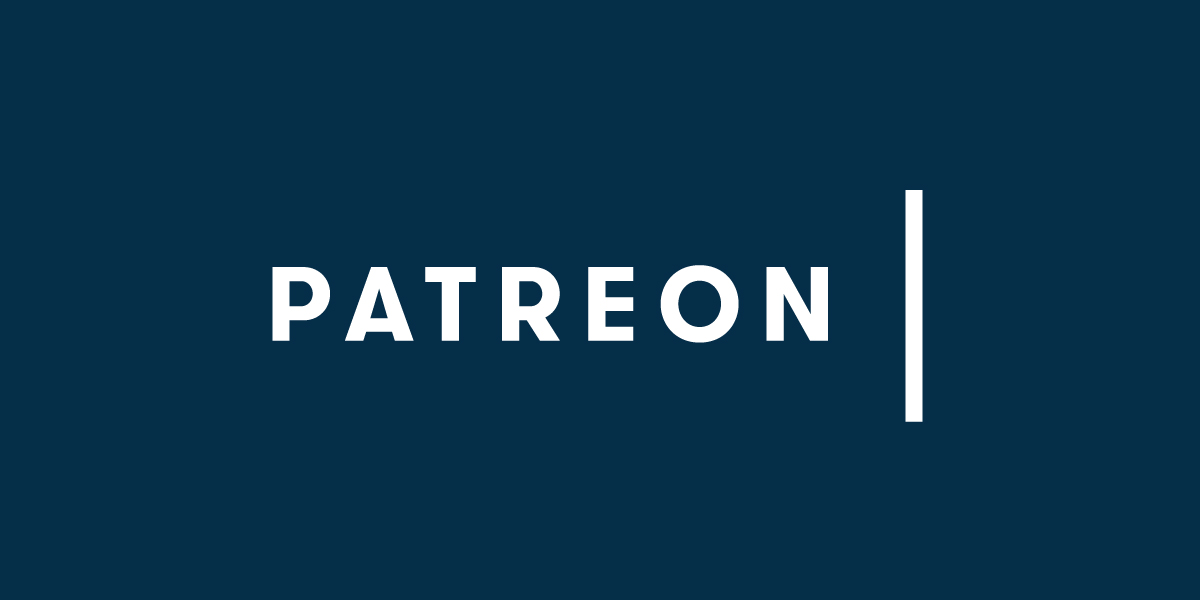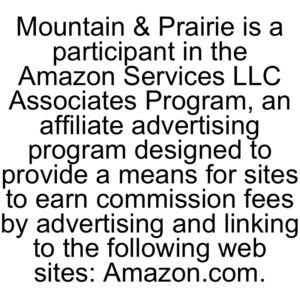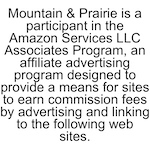Christian Beckwith – Building a Conservation Coalition

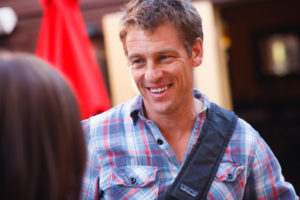
Christian Beckwith is the director of SHIFT, a Jackson Hole-based non-profit that is building a powerful coalition to protect our nation’s public lands. By bringing together climbers, skiers, hunters, anglers, land managers, and countless other stakeholders, SHIFT is finding common ground and harnessing these groups’ collective power to ensure that public lands—our birthright as Americans—remain safe during this tenuous time in political history.
After a distinguished career in the publishing world which included editing the American Alpine Journal and co-founding Alpinist Magazine, Christian experienced a profound change in priorities when one of his close friends was killed in an avalanche in the Teton backcountry. At that point, Christian decided to focus his resources and energy exclusively on work that makes a “substantive difference in the world.” From there he founded the Center for Jackson Hole, SHIFT, and, most recently, the Emerging Leaders Program which brings together a diverse group of early career leaders in conservation.
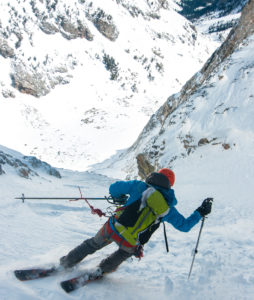
Christian’s career is inspiring in many ways, but I especially admire his willingness to set audacious goals, put himself on the line, and not wait around for permission to make things happen. We dig into all of these topics in our hour-long conversation, and he shares some interesting insights into his career and the future of conservation. We also discuss Christian’s early childhood experiences that led him to a career focused on adventure and the outdoors, and he talks about his relationship with Yvon Chiounard and how Chiounard has influenced him both personally and professionally. We chat about Christian’s favorite books, documentaries, and how fatherhood has focused his thinking on the importance of conservation. There’s a full list of the topics we discuss in the episode notes.
Given the current fights surrounding our public lands, this is a timely and powerful episode. I hope this conversation spurs you to continue educating yourself on threats to our public lands and to take appropriate action to protect them.
Photos courtesy of Christian Beckwith
Click Here to Download on iTunes
—
Click Here to Download on Google Play
—
Click Here to Download on Stitcher
—
—
Episode Notes
Topics Discussed
Information Referenced
- SHIFT
- The Emerging Leaders Program
- Alpinist Magazine
- The American Alpine Journal
- Apocalypse Couloir and Prospectors Mountain
- Aldo Leopold’s Land Ethic
- Yvon Chouinard
- Patagonia
- Doug and Kris Tompkins
- 180 South
- The Hobbit by J.R.R. Tolkien
- Sometimes a Great Notion by Ken Kesey
- On the Road by Jack Kerouac
- War and Peace by Leo Tolstoy
- The New Yorker
- Barbarian Days: A Surfing Life by William Finnegan
- Supermensch – The Legend of Shep Gordon
Tyler Sharp – The Sportsman Storyteller
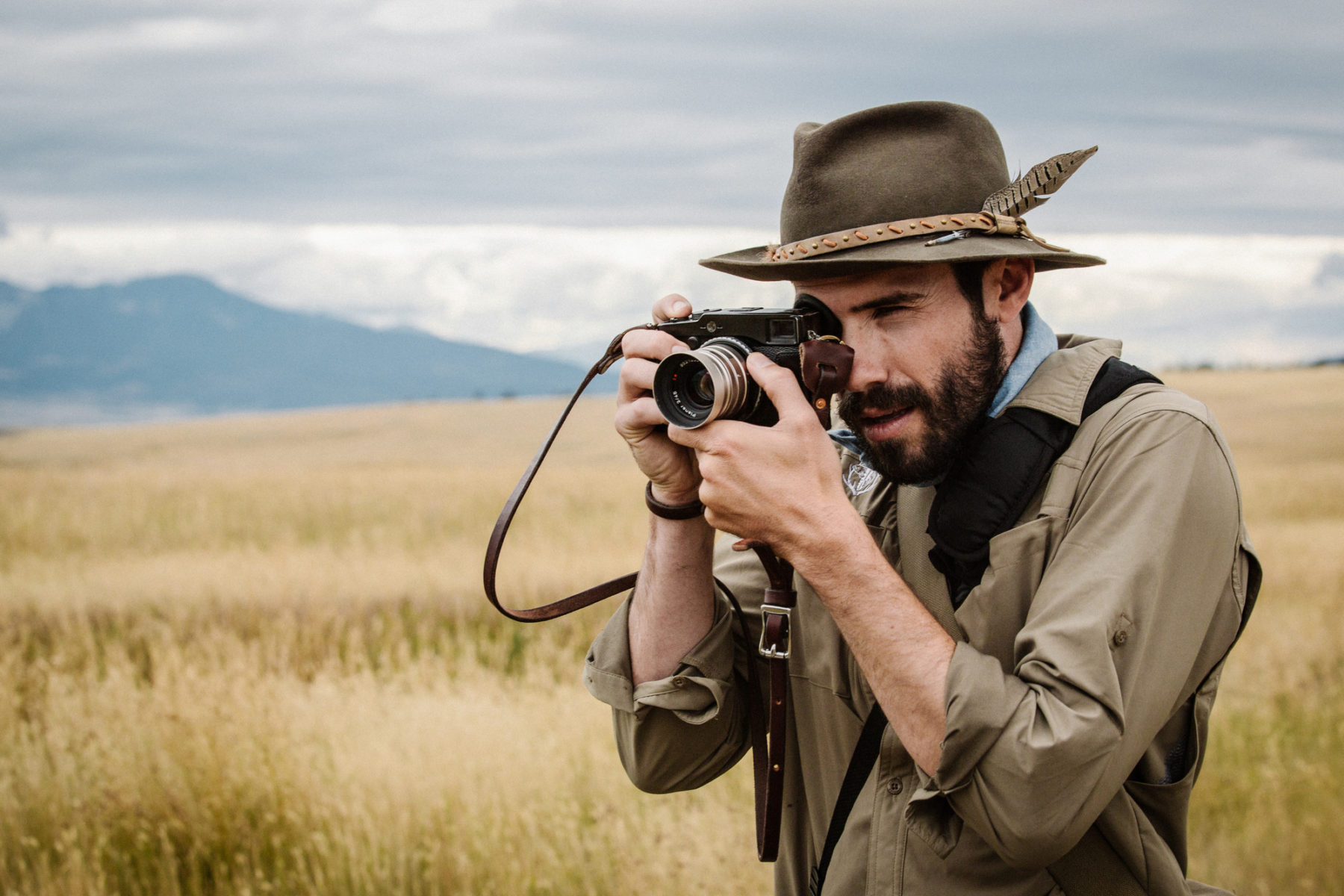
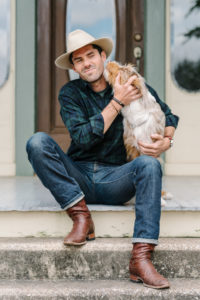
Tyler Sharp is an adventurer, sportsman, conservationist, and world traveler with a gift for telling stories through images and the written word. While he may be best known for his photography focusing on Americana and Western lifestyle, travel, and adventure, Tyler has built an impressive resume that includes filmmaking, directing, writing, and creative strategy. His work has taken him to some of the most spectacular and far-flung regions of the globe, with an emphasis on East Africa, Montana, and his home state of Texas.
As a devoted hunter and fisherman, Tyler has chased game in some of the world’s wildest regions, giving him a global perspective on the importance of natural resources, game management, and sustainable hunting practices. As you’ll hear in our conversation, Tyler has thought deeply about the practical and ethical implications of hunting and fishing both abroad and here in the American West. His sincere devotion to conservation and adventure shines through in his work and has made him the go-to photographer for iconic brands such as Filson, Cabelas, and Stetson, to name a few.
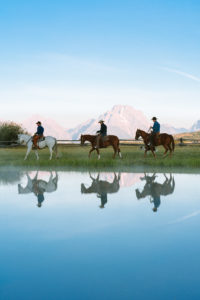
Tyler and I met up in Estes Park, Colorado, just outside of Rocky Mountain National Park, for a fun conversation that could have gone on for hours. We discussed his beginnings as a professional photographer, which started in earnest when he moved to East Africa just out of college—he’s got some intense stories from his travels that include run-ins with lions and leopards. We covered his thoughts on conservation, and how his time traveling abroad has given him a clearer understanding of conservation issues facing the American West. Then the conversation took an unexpected but interesting turn when we chatted about his commitment to Kung Fu (yes, Kung Fu!), meditation, and eastern philosophy.

Be sure to check out the episode notes for the full list of topics covered, because we touch on a lot. This is a wide-ranging conversation that takes many surprising twists and turns. Hope you enjoy!
All photos courtesy of Tyler Sharp
Click Here to Download on iTunes
—
Click Here to Download on Google Play
—
Click Here to Download on Stitcher
—
—
Episode Notes
Topics Discussed
Information Referenced
- Tyler Sharp
- Tyler on Instagram
- Absoroka Ranch
- USC Film School
- Stephen Smith interview
- Nicholas Coleman interview
- Camrin Dengel interview
- Filson
- Filson Life
- Stetson
- Cabelas
- Modern Huntsman on Instagram
- Drop Cap Design
- Kung Fu
- Joseph Campbell
- The Power of Myth
- The Hero with a Thousand Faces
- Bill Moyers and Joseph Campbell documentary
- The Hero’s Journey
- Lord of the Rings
- Star Wars
- Emigrant, Montana
2016 Reads

A comprehensive list of every book I recommended in 2016, taken directly from my bimonthly book recommendations email.
Sapiens: A Brief History of Humankind by Yuval Noah Harari – If you’ve ever wondered how we humans managed to transform ourselves from fancy monkeys who roamed the plains eating berries and raw meat into fancier monkeys who fly rocketships to the moon, then this is the book for you. Harari crams an unbelievable amount of interesting information into 464 pages, covering all aspects of Homo Sapiens’ rise to power – agriculture, religion, government, empires, corporations, and science, just to name a few. In a sometimes funny and surprisingly easy-to-read style, he boils down the last 70,000 years into fascinating (and probably highly controversial to some) narrative of our species’ relatively short existence on earth.
Encounters with the Archdruid by John McPhee – What happens when you take a passionate (some would say militant) environmentalist and send him on three separate close-quartered trips with a mining-obsessed geologist, a loudmouth resort developer, and a brash former Secretary of the Interior who loves to dam up rivers? Read this book and you’ll find out. In it, John McPhee follows David Brower (former head of the Sierra Club) on each of these trips, and McPhee gives unbiased, fully detailed accounts of the conversations and interactions between the men. The book is a great reminder that environmental and conservation issues are extremely complex, and no matter which side of the spectrum you are on, there is no “right” answer. If the answers were that easy, the problems would’ve been fixed generations ago. A thought-provoking read by one of our most talented living authors.
Being Nixon: A Man Divided by Evan Thomas – I think a better title would be “Being Nixon: A Weirdo.” I knew almost nothing of substance about Nixon when I picked up this book, and now I can’t stop thinking about him. What an oddball! Nixon was a walking contradiction— he was an introverted, socially awkward man who devoted his life to politics, one of the most extroverted careers imaginable. He fancied himself a tough guy, yet he was terrified of face-to-face confrontation (and cried a lot, too). He claimed to hate Ivy Leaguers, yet he filled his cabinet with them and constantly sought their approval. He positioned himself as a champion of the downtrodden “silent majority,” yet he was disgustingly racist. The list goes on and on. As weird as he was, I came away thinking that there’s something strangely admirable about a man who could push himself so hard to reach the pinnacle of a career in which he had no natural talent. It’s like if I somehow willed my way into becoming the MVP of the NBA. I learned about the book from Conan O’Brien, who periodically does serious, non-comedy interviews with authors and other intriguing people. Here’s the one for Being Nixon, but they are all great. (Also worth reading by Evan Thomas – The War Lovers: Roosevelt, Lodge, Hearst, and the Rush to Empire, 1898)
Destiny of the Republic: A Tale of Madness, Medicine and the Murder of a President by Candice Millard – President James Garfield has one of the more impressive life stories of any U.S. President, yet few people know about him because he was assassinated just months into his presidency. Alas, when people now hear the name Garfield, they just think of that fat lasagna-eating cat. Anyway, Garfield was shot in 1881, just as medicine was rounding the corner from being one step above voodoo into becoming an actual science with a focus on sterilization and controlling infection. Unfortunately for Garfield, his doctors had not yet accepted all the new-fangled inventions like, say, hand washing. Within minutes of being shot, while lying on the filthy train station floor, Garfield’s doctors were jamming their nasty fingers into the wound, trying in vain to extract the bullet. The doctors did, however, start a fatal infection that dragged out for almost three months until Garfield finally died. Worst case, this book will make you appreciate just how far our medical technology has progressed in less than 150 years. (Also by Millard is River of Doubt: Theodore Roosevelt’s Darkest Journey, one of my favorite books of all time.)
Endurance: Shackleton’s Incredible Voyage by Alfred Lansing – My good buddy and Denali tentmate recommended this book to me. Since he and I get a peculiar enjoyment from freezing our faces off in ridiculously cold places, he thought I’d love the book… and I did. It follows Ernest’s Shackleton’s ill-fated overland expedition across Antartica and consists of three brutal survival tales—shipwrecked on a floating ice flow for over a year, open boat sailing through the roughest seas on earth, and traversing an uncharted, glaciated, arctic island on foot with no climbing gear. When taken as one massive adventure, it is hard to understand how not a single life was lost. Endurance is the ultimate example of rock-solid leadership, the limits of human toughness, and the power of optimism. I actually got chills on my neck when reading the last two pages, which I don’t recall ever happening before. It’s one of the best true adventure stories of all time.
It All Turns on Affection: The Jefferson Lecture and Other Essays by Wendell Berry – In my circle of friends involved in land conservation and agriculture, Wendell Berry is a living legend. A Stanford-educated writer and poet who studied under Wallace Stegner, Berry choose to return home to his family farm in rural Kentucky to live, farm, and write, all while deeply immersed in a place that he loves. The first essay in this book is a reflection on the importance of truly knowing a place, having deep affection for it, and developing the obligation to protect and care for it. I imagine that I’ll read this essay at least once a year, as it is one of those dense, meaningful, beautifully written works that will take on a different significance depending on my current stage of life.
Four Fish – The Future of the Last Wild Food by Paul Greenberg – Despite the fact that there are thousands of species of fish on earth, consumers focus primarily on four species: salmon, sea bass, cod, and tuna. Why? Well, it’s a complicated and fascinating story that takes 304 pages to explain. Greenberg travels around the world learning from the fishermen, scientists, geneticists, conservationists, and other characters who’ve played a role in making these four species the mainstays of the seafood industry. It’s also a cautionary tale of the irreversible global damage that unchecked commercial fishing is causing, and it will make you think twice next time you see those massive slabs of pink salmon at your local Costco. [Are you a weirdo like me who likes fish biographies? Then check out Cod: A Biography of a Fish that Changed the World by Mark Kurlansky. It’s even better than Four Fish.]
The Men Who Stare at Goats by Jon Ronson – If this book were fiction, it would be too ridiculous to believe, and I’d promptly throw it in the trash. But it is true, which makes it really hard to put down. It’s the story of a secret U.S. military division that was created during the 1960s with the goal of using psychic and metaphysical powers to fight evil around the world. The book describes American generals who are convinced they can walk through walls, “warrior monks” who claim the ability to become invisible on command, and, of course, psychic military contractors who can allegedly kill goats by staring at them. It’s easy to shrug off some of this nonsense when thinking of it in the context of the hippied-out 60s, but you’ll be surprised to know that the U.S. government has been employing some of these wacky techniques as recently as the post-9/11 Iraq and Afghanistan wars. A perfect example of truth being stranger than fiction.
Deep Work: Rules for Focused Success in a Distracted World by Cal Newport – The author is a 34-year old professor of computer science at Georgetown who has published over 70 academic papers, four books, and countless blog posts, all while having a family and rarely working after 6PM. How does he do it? His answer is “Deep Work”—disciplined, lengthy stretches of undistracted, highly focused work. Newport’s theory is that many knowledge-based workers have lost the ability to focus thanks to endless technological distractions such as email, social media, and smartphones. He also believes that professionals with the ability to cultivate focus and deep thinking will have a huge advantage over the distracted masses. Anyone who spends a majority of their workday in front of a computer needs to read this book. I took tons of notes on this book and have already referred back to them multiple times. [Two other related books that I recommend are Shop Class as Soulcraft: An Inquiry into the Value of Work by Matthew B. Crawford and Focus: The Hidden Driver of Excellence by Daniel Goldman.]
Shadow Divers: The True Adventure of Two Americans Who Risked Everything to Solve One of the Last Mysteries of World War II by Robert Kurson – Prior to reading this book, I thought that scuba diving was a pastime for portly Carnival Cruise patrons who enjoy staring at starfish and conch shells while flailing around in tropical waters. Well, I stand corrected. The book follows a group of tough, competitive, risk-loving deep water shipwreck divers who discover a wrecked Nazi submarine off the coast of New Jersey, which leads them on a six-year adventure that ends with them rewriting the history books. The book goes into great detail about the complexities and dangers of deep water diving, and makes it crystal clear that this “sport” is not for the faint of heart. The mentality of these guys (as evidenced by several team members who die on the bottom of the ocean) is very similar to many world-class high-altitude mountaineers—absolutely obsessed with a goal and willing to do anything to achieve it.
Extreme Ownership: How U.S. Navy SEALs Lead and Win by Jocko Willink and Leif Babin – I really need to lay off the Navy SEAL books, because every time I read one, I feel like a weak, lazy, undisciplined lunk. But after listening to an interview with one of this book’s authors, I knew I needed to check it out. Willink and Babin are retired SEALs who now run a leadership consulting business, trying their best to impart some of their battlefield wisdom to corporate America. The book alternates between true war stories and case studies of how those battlefield lessons can be applied to the business world. Interestingly, many of the war stories describe times that the authors made mistakes, then they deconstruct how they adjusted course, fixed the situations, and learned valuable lessons—it’s an unexpected and humble method of conveying their wisdom. I gleaned a lot of value from this book, even though I basically work alone. I’d imagine professionals who lead teams would find the advice all the more valuable.
The Professor in the Cage: Why Men Fight and Why We Like to Watch by Jonathan Gottschall – Gottschall was an out-of-shape English professor at a small liberal arts college who was feeling weak and sloppy (perhaps he was reading too many Navy SEAL books?), so he decided to join a mixed martial arts (MMA) gym. The book follows his 2+ year journey as he goes from complete novice to skilled and tough enough to compete in a sanctioned MMA fight. Layered on top of the author’s personal adventure is a very interesting discussion around why men have always been focused on demonstrating strength, dominance, and mental toughness, and how that tendency plays out in sports, business, or just plain ol’ brawling. [Years ago I read A Fighter’s Heart: One Man’s Journey Through the World of Fighting by Sam Sheridan and LOVED it. I still think about it all the time, so I highly recommended it as well.]
The Emerald Mile: The Epic Story of the Fastest Ride in History Through the Heart of the Grand Canyon by Kevin Fedarko – This book hits on many of the subjects I love: adventure, history, conservation, the West, water, and crazy people. The title sums up the primary storyline, but the book covers many ancillary topics including Coronado’s 14th-century expedition to the Grand Canyon, John Wesley Powell’s first descent of the Colorado, a history of the US’s river-damming efforts (and ensuing protests from Edward Abbey et. al.), and the culture of river guiding in the West. If you enjoy exciting adventure stories and want an overview of the history of Western water issues, this book is an excellent choice. [If you’re looking for a straight-up river adventure book, check out Hell or High Water: Surviving Tibet’s Tsangpo River by Peter Heller. If you’re looking for an in-depth conversation about Western water policy, check out my interview with former river guide and current water innovator Spencer Williams.]
Open: An Autobiography by Andre Agassi – I never really played tennis and I’m not an avid fan of the sport, but I found this book to be unbelievably interesting. It digs deep into an idea that I find endlessly fascinating: that people’s best characteristics can also be their worst. Most of the aspects of Agassi’s life that drove him to be a champion—a relentless competitive streak, high-strung personality, an overbearing father—were also the causes of much of his personal misery and anguish. Agassi reveals some astonishingly private details of his life (e.g. his frosted mullet was partly a wig, humiliating specifics of his father’s bullying, his use of meth, etc.), details that made me much more sympathetic toward him and his brash, attention-grabbing antics as a youngster, including his acid-washed jorts. The book was a good reminder to me that most people—from elite athletes to everyday Joes—are fighting some sort of internal battle, and that if I knew their full story, I’d probably be more compassionate and patient with them. [For more insights into the idea that a person’s best characteristics can also be their worst, I highly recommend The Last American Man by Elizabeth Gilbert.]
On Immunity: An Inoculation by Eula Biss – A year or so ago, you may remember endless media coverage around a measles outbreak that originated in Disneyland (I would’ve guessed Carnival Cruise Lines was somehow responsible), which devolved into arguments regarding the nuances of immunology from the likes of Jenny McCarthy and other washed-up celebrities. In the midst of the hubbub, I read an article by Bill Gates in which he recommended this book as a solid, well-reasoned overview of the subject. If it’s good enough for Gates, it’s good enough for me, and I’m very glad I read it. Biss efficiently covers everything from broad immunization theory down to the scientific details, which gave me a useful foundation of knowledge that I’m happy to have, especially as a new parent.
Rapt: Attention and the Focused Life by Winifred Gallagher – In my last email, I recommended Deep Work by Cal Newport, which I absolutely loved. Throughout the book Newport references Rapt, so I decided to give it a read. Gallagher’s main premise is that your life is the creation of what you do (and do not) focus on, and that one’s ability to choose their focus can play a big role in their happiness. A lot of this book details the science of attention, which I find very interesting. It also gave me a deeper understanding of Newport’s book. But unless you are a science nerd, I’d recommend reading Deep Work first; then, if you like it, delve deeper with this one. [Another great book on focus, which is referenced by both Gallagher and Newport is Flow: The Psychology of Optimal Experience by Mihaly Csikszentmihalyi. Yes, that is his real name.]
Churchill by Paul Johnson – For years I’ve wanted to learn more about Winston Churchill, but I haven’t been willing to devote the time required for most of his 600+ page biographies. When I came across this short biography, it seemed like the perfect way to sample the goods. It was a fun read that piqued my interest in the man, and I plan to read more books about him in the coming years. Churchill, like my hero Theodore Roosevelt, squeezed every last drop out of his life, and enjoyed tremendous success across a wide spectrum of disciplines. At the end of the book, Johnson details the five character traits that led to Churchill’s success, which are interestingly the same five characteristics I’d argue are the main reasons for TR’s success. [Did somebody say TR? Then check out the greatest book of all time, The Rise of Theodore Roosevelt by Edmund Morris.]
Getting Stoned with Savages: A Trip Through the Islands of Fiji and Vanuatu by J. Maarten Troost – I almost never reread books, but I enjoyed this one even more the second time. This book and its predecessor The Sex Lives of Cannibals: Adrift in the Equatorial Pacific follow the misadventures of a hilarious guy who moves from Washington, DC to the South Pacific thanks to his wife’s job in international development. Both of these books were truly life changing for me—I read them while living and working in DC, and they planted the then-ridiculous idea to pack up and move to Central America thanks to my wife’s job in international development. If I ever write a book, I hope it can be a fraction as funny as these two—It is worth the book’s $12.23 price tag just to read Troost’s description of the DC subway and a haughty businessman whom he describes as a “smug little puffin [who] came to represent all that I found odious about Washington.” [Troost’s third book Lost on Planet China: One Man’s Attempt to Understand the World’s Most Mystifying Nation is also hilarious and worth reading.]
The Naturalist: Theodore Roosevelt, A Lifetime of Exploration, and the Triumph of American Natural History by Darrin Lunde – NEW T.R. BOOK ALERT! Just when I think I’ve maxed out my T.R. knowledge, The Naturalist is published! This book focuses exclusively on T.R.’s work in natural history, starting with his early childhood bird obsession and culminating with his yearlong, post-presidency African hunting/scientific expedition. The book also digs deep into the growth of natural history in the United States, discussing the rise of natural history museums and profiling the era’s pioneering naturalists. The author does a great job explaining how T.R. could be such a devoted conservationist and nature lover, while also being an enthusiastic big game and bird hunter. I’ve always said that his 7.5 years as President were the least interesting part of T.R.’s life, and this book presents strong evidence for my claim. [For a sometimes too-detailed history of T.R.’s conservation work, check out Douglas Brinkley’s Wilderness Warrior: Theodore Roosevelt and the Crusade for America. For a non-T.R. history of America’s naturalist/conservation movement, check out Last Stand: George Bird Grinnell, the Battle to Save the Buffalo, and the Birth of the New West by Michael Punke.]
Denali’s Howl: The Deadliest Climbing Disaster on America’s Wildest Peak by Andy Hall – I haven’t come across many good books about Denali, but this one seemed promising. It details a 1967 expedition in which 12 climbers started up the mountain, and only five made it down. The cause of disaster was not so much incompetence (although there was a little of that) as it was a massive superstorm that hammered the mountain for days on end. I’ve spent over 45 days on Denali and have experienced firsthand how a storm with just a quarter of the power of this storm can wreck the most high-tech, 21st-century gear and tents (as well as the climbers in those tents!). It is a stern reminder that, in the end, humans and all our fancy gear are simply no match for nature. I’d only recommend this book to people with a specific interest in Denali—it’s a rather meticulous, point-by-point retelling of this particular expedition, and I can see how it might be boring for folks without an interest in the subject. [If you’re looking for a solid collection of mountaineering stories suitable for most audiences, I highly recommend Jon Krakauer’s Eiger Dreams: Ventures Among Men and Mountains.]
Saban: The Making of a Coach by Monte Burke – I’m not a huge fan of college football, but I am a huge fan of fascinating characters, so I’ve always been intrigued by Alabama head coach Nick Saban. A consistent winner, perpetually grumpy, and off-the-charts competitive, I was excited for some insight into what makes him tick. Predictably, a lot of his success can be chalked up to simply outworking the competition—both the quantity and uber-focused quality of his work are super-human. Less predictably, Saban does not focus on motivation, rather he focuses on “The Process,” which involves breaking the game down into its simplest parts. The book digs deep into his entire life, from growing up poor in coal-mining country, to his early career when he never held a position for much more than a year, to some of his NFL flameouts. Solid portrait of an interesting guy, with many lessons that can be applied to almost any business or hobby.
Tribe: On Homecoming and Belonging by Sebastian Junger – After decades of writing about wars and profiling soldiers, Junger noticed that even though America’s military conflicts have become less and less deadly for U.S. soldiers, there has been a staggering rise in the prevalence of PTSD. Even soldiers who never see direct combat report PTSD-like symptoms after leaving the military. In the book, Junger theorizes that long-term, persistent PTSD is more the result of societal aspects of life in the U.S. than traumatic war experiences. After leaving the military, soldiers are forced to try and find a new purpose larger than themselves, while simultaneously being thrust into a society severely lacking in community. Junger then explores humans’ evolutionary need for purpose and community, and how our modern-day lives can be startlingly devoid of both. There are lessons for everyone in this book, whether you served in the military or not. It’s one of the most throught-provoking books I’ve read in the last year, and I highly recommend it. [For more on humans’ evolutionary heritage, check out Sapiens: A Brief History of Humankind by Yuval Noah Harari. Equally thought-provoking.]
Braving It: A Father, a Daughter, and an Unforgettable Journey into the Alaskan Wild by James Campbell – Even though my daughter is barely a year old, I already daydream about some of the fun adventures that we’ll have together in wild places. This book presents an excellent blueprint for hardcore father-daughter Alaska expeditions. The author and his teenage daughter take a series of three trips above the Arctic Circle—two of which involve living and working with trappers in their remote Alaskan outpost. The third trip is an unsupported backpacking and canoeing trip down a remote, grizzly-infested valley. The book is very well written, and I could easily relate to both the father and daughter. The book is also heavy on travel and adventure narrative and light on sappy father-daughter emotional nonsense, which I appreciated. A great book, especially for dads of little girls.
Ego is the Enemy by Ryan Holiday – I loved Ryan Holiday’s previous book The Obstacle is the Way: The Timeless Art of Turning Trials into Triumph. It was one of those books that I covered with underlines and notes, and, now two years later, it still sits on my bedside table for quick reference. In Obstacle, Holiday discusses methods—many based on lessons learned from Stoic philosophy or specific historical figures—for dealing with the challenges brought about by external forces in our lives. In Ego in the Enemy, he examines the powerful internal force of ego, and how it can affect different stages of life—early career, hard-won success, and inevitable failure. Using real-world examples ranging from Howard Hughes to Benjamin Franklin to Malcolm X and many more, Holiday provides concrete case studies of ways that ego can either assist or sabotage the pursuit of our goals. Now covered in notes, this book will remain within close reach for years to come.
One Breath: Freediving, Death, and the Quest to Shatter Human Limits by Adam Skolnick – Did you know there are people who can inhale one massive breath, dive 300+ feet below the ocean’s surface, then swim back to the top, mostly unscathed? I didn’t, and I’m usually in the know when it comes to such oddballs. One Breath is an overview of the sport of freediving, and it explores the activity from every angle—its history, physiology, training techniques, mental aspects, and current competitive landscape. While the book focuses primarily on Nick Mevoli, a freediving prodigy who ultimately pushes beyond his limits, it also profiles many of the sport’s top competitors, an intriguing and diverse cast of characters. As an interesting side note, I started messing around with some of the breathing techniques described in this book and easily held my breath for 3:15! Crazy stuff that I will continue to explore. [For more ocean adventure, I’ll re-recommend this book from the March/April 2016 email: Shadow Divers: The True Adventure of Two Americans Who Risked Everything to Solve One of the Last Mysteries of World War II by Robert Kurson]
Hillbilly Elegy: A Memoir of a Family and Culture in Crisis by J.D. Vance – Growing up in eastern NC and spending plenty of time in Appalachia (as well as one particularly memorable stint deep in the Louisiana bayou), I’m very familiar with the demographic profiled in this book. But having the plight of poverty-stricken white people so intimately described by one of their own was eye-opening and disturbing even to me—I can only imagine how shocked people less familiar with this culture (e.g. many of my neighbors here in Boulder, CO) would be. The author grew up in one of the poorest parts of Appalachia, with an opioid-addicted mother and no father, yet he managed to claw his way out, eventually graduating from Yale law school. This would be a fascinating story at any time, but it’s especially important at this juncture in our country’s history. Check out this WSJ book review for a more detailed analysis by a person who actually knows how to recommend books. [People may think I’m joking, but the cult classic documentary The Dancing Outlaw also gives a surprisingly accurate portrayal of life in the “holler.”]
Barbarian Days: A Surfing Life by William Finnegan – No exaggeration, this is one of the best books I’ve ever read. It’s part memoir and part adventure travel narrative, and it is written in a style so beautiful and engaging that I found myself re-reading pages and passages multiple times—I never do that, nor do I use the word “beautiful” to describe anything. The author is a war reporter and staff writer for The New Yorker who has lived a fascinating, adventurous life. From his childhood in California and Hawaii, a multi-year, around-the-world surf trip, teaching English in apartheid-oppressed South Africa, and his early career in San Francisco, surfing has been the common thread that connects all aspects of his life. He describes surfing and the ocean in ways that are amazing, artistic, and accurate, yet he somehow never goes overboard with flowery or pompous language—unexpected for anyone from The New Yorker. Even if you have no interest in surfing, you’ll love this book. It’s long with small print, but I never once found my attention drifting. I just wanted a fun surf adventure story, and I ended up with a Pulitzer Prize-winning work of art. It’s amazing. BUY IT! [My two other favorite surf books are In Search of Captain Zero: A Surfer’s Road Trip Beyond the End of the Road by Allan Weisbecker and Saltwater Buddha: A Surfer’s Quest to Find Zen on the Sea by Jaimal Yogis.]
Home Ground: A Guide to the American Landscape edited by Barry Lopez and Debra GwartneyAfter nearly a decade of struggling to figure out original ways to accurately describe ranches, rivers, and western landscapes, this book was a godsend. More of a reference book than prose, it’s a comprehensive catalog of over 850 terms that describe America’s natural features. Even better, the terms’ original definitions were composed by some of our best contemporary writers, folks like Jon Krakauer, Charles Frazier, and many more. I’ve caught myself looking up one word, and then continuing to read, page after page, because it’s all just so interesting. Highly recommended for anyone like me who thrashes through the writing process. [I was turned on to the book by Stephen Rinella, one of the modern-day masters when it comes to describing the natural world. His book American Buffalo: The Search for a Lost Icon is one of my all-time favorites.]
End of Plenty: The Race to Feed a Crowded World by Joel K Bourne Jr. – The author is from my hometown and has had a distinguished career writing for National Geographic—most notably, he warned of New Orleans’ hurricane vulnerability in 2004, just 10 months prior to Katrina’s wrath. In the End of Plenty, he lays out a balanced history of industrial agriculture, then goes on to scare the bejesus out of the reader with numerous examples of how the world is going to run alarmingly short on food if we remain on our present (population, political, technological) trajectory. Thankfully, the second half of the book is a series of optimistic, hopeful stories of individuals and companies altering the doomsday trajectory through innovative and sustainable agriculture that can be applied on a global scale. It’s dense, well researched, and thought provoking, but written in a fun style that you’d expect from a National Geographic reporter.
The Life-Changing Magic of Tidying Up: The Japanese Art of Decluttering and Organizing by Marie Kondo – I don’t know that I’d call it “life-changing” and it’s certainly not “magic,” but after reading this book, I went absolutely nuts decluttering. My wife and daughter were out of town for the weekend, so I spent two full days ridding myself of accumulated junk—I gave a pile to Goodwill, recycled at least 100 pounds of paper, and organized everything else into what seems to be a sustainable system. Keep in mind, I’m no pack rat and purposefully don’t have a lot of junk, so I was amazed at how much I was able to eliminate using Kondo’s system. There are plenty of weird/silly ideas in the book (she seems to think socks are alive), but it convinced me to spend a weekend cleaning instead of having fun in the mountains, so I have to recommend it.
Buffalo for the Broken Heart: Restoring Life to a Black Hills Ranch by Dan O’Brien – This book combines many of the subjects I find fascinating: ranching, natural history, bison, conservation, the American West, and regenerative agriculture. It follows the author’s journey to convert his South Dakota ranch from a traditional cattle operation to a 100% grassfed and finished bison operation, which, as it turns out, is not an easy task. I had the pleasure of meeting the author a year ago, and he’s equal parts tough-guy rancher and soft-hearted intellectual—he seems just as likely to write a verse of poetry as he is to finish a bar fight. The book thoroughly explains the economic and emotional challenges facing ranchers throughout the West, while digging deep into the historical and ecological aspects of flora and fauna, particularly buffalo, in the shortgrass prairie ecosystem. But if you’re looking for a brief overview of O’Brien’s work without all the words and stuff, check out the short, free film Unbroken Ground. [If you like this book, I’d also suggest O’Brien’s most recent title: Wild Idea: Buffalo and Family in a Difficult Land.]
Natural Born Heroes: Mastering the Lost Secrets of Strength and Endurance by Christopher McDougall – Several friends who run ultras recommended this book, so I was excited to check it out. It’s basically two books rolled into one: a historical account of a little-known WWII battle on the island of Crete and the author’s personal adventure to discover how Cretans were able to run farther and lift more than average humans using only natural and timeless training methods. While the WWII stories are interesting, I enjoyed the second part of the book the most, which involves the author ripping to shreds the U.S. government’s food-pyramid-based diet, gyms that encourage the use of weight machines, and the “sports nutrition” industry. Contrary to popular belief, true fitness and lifelong health do not require a membership to Gold’s Gym or chugging gallons of gatorade. Reading tip: If you get bogged down in the WWII history details, just skim ahead a few pages and it will pick up. [I also highly recommend McDougall’s other well-known book Born to Run: A Hidden Tribe, Superathletes, and the Greatest Race the World Has Never Seen.]
The Power of Habit: Why We Do What We Do in Life and Business by Charles Duhigg – I’m always looking for tips on how to easily break bad habits and form good ones. (For a friend. Not for me, of course.) This books answers those questions with detailed scientific research and well-documented case studies, all presented in an engaging and entertaining style. The author, a New York Times investigative reporter, does an excellent job presenting a ridiculous amount of data in a way that is fun to read and memorable. It consists of three sections: habits of individuals, organizations, and societies. I found the habits of individuals section to be the most useful, but folks who work at larger companies or manage teams of people may get more out of the other two sections than I did. If you’re the type to set New Year’s resolutions, this book might give you a fighting chance of sticking with them past January 15th.
Islam and the Future of Tolerance: A Dialogue by Sam Harris and Maajid Nawaz – An outspoken atheist neuroscientist (Harris) sits down with a former radical Islamic extremist (Nawaz) to discuss religion… what could possibly go wrong? Surprisingly, nothing. In fact, I’d say everything goes right—they have a respectful, in-depth, wide-ranging conversation in which they both come away better understanding each other’s opinions. This short book is basically their conversation transcribed into print, and it provided me with new insights into Islam and the controversies surrounding the religion. Given our current political climate, it’s very refreshing to observe two smart, well-informed people with opposite belief systems have a civil and substantive conversation. If more people like these authors were on TV, I probably wouldn’t have canceled my cable! [I also highly recommend Sam Harris’s Lying, another short book that argues that no one should tell a lie of any kind, “white lie” or otherwise, ever.]
Shoe Dog: A Memoir by the Creator of Nike by Phil Knight – The only things I knew about the early days of Nike were that founder Phil Knight paid an art student a few bucks to design the famous “swoosh” logo and something about his using a waffle iron to create prototype shoe soles. Turns out there’s more to the story than that. I LOVED this book, and it’s one of the best business memoirs I’ve ever read. It’s an extremely revealing and exciting firsthand account of Knight’s journey from writing a business plan during grad school to eventually taking Nike public. He seems to be very honest in his telling of the story—he’s upfront about his self-doubt and open about how the company was teetering on the edge of bankruptcy for well over a decade. He makes it crystal clear just how damn hard it was to survive, much less thrive as a company. This was my favorite book on this list, highly recommended. [One of my other favorite business memoirs is Call Me Ted by Ted Turner. Ted’s on the polar opposite end of the personality spectrum than Knight, but many of his struggles and lessons learned are similar.]
The Daily Stoic: 366 Meditations on Wisdom, Perseverance and the Art of Living by Ryan Holiday and Stephen Hanselman – This is the third book by Ryan Holiday that I’ve recommended. It’s what I call a “bedside table book”—one that I keep close at hand to page through before bed or first thing in the morning. This one is 366 quotes by Stoic philosophers, each followed by a brief discussion of how the idea can be applied to our daily lives. I was forced to take standard philosophy in college and found it infuriatingly worthless, but my experience with Stoicism has been the exact opposite—the ideas are amazingly relevant and useful in my day-to-day life. The basic gist of Stoicism is that you can’t control what happens to you, only how you react, and guys like Seneca, Marcus Aurelius, and Epictetus have some pretty solid thoughts on the subject. Think of this book as a compilation album of the Stoics’ greatest hits. [One of my other favorite bedside table books is the National Outdoor Leadership School’s Wilderness Wisdom.]
Running Man: A Memoir by Charlie Engle – To call the author’s life “interesting” would be a comical understatement. Charlie Engle grew up an excellent athlete and solid student, but then his life veered into the abyss of drug and alcohol abuse, culminating in a multi-year addiction to crack. Miraculously, he pulled himself out of the death spiral and focused his addictive energy on ultra-endurance challenges such as 100-mile runs, adventure races, and a ridiculously long run across the Sahara Desert. But after getting his addictions under control and life in seemingly good order, he was busted for mortgage fraud and spent 16 months in federal prison. Now he’s out of the ol’ gray bar motel and back at his endurance feats… and apparently trying to scrape together some dough by selling this book (sorry, Charlie, I borrowed it from the library). I read this book as more of a cautionary tale than an inspirational one, which I don’t believe was its intended purpose. Trouble and conflict seem to follow this guy wherever he goes, and, other than his physical gift for endurance, there’s not much about him that I’d like to emulate. Entertaining book, nonetheless. [For a more uplifting addict-turned-athlete story, I recommended Finding Ultra: Rejecting Middle Age, Becoming One of the World’s Fittest Men, and Discovering Myself by Rich Roll.]
Connor Coleman – How to Build a Meaningful Life in the West

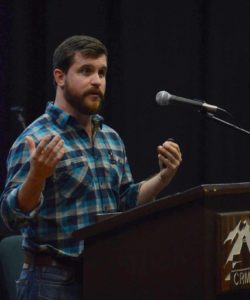
Connor Coleman is the founder of Resiliency Lands, a progressive, conservation-minded land management and advisory group committed to promoting ecological and resource resiliency. Prior to starting Resiliency Lands, he held a variety of positions closely connected to the land, jobs that would be on the wish-list of anyone who loves adventure and the American West—wildland firefighter, cowboy, bison manager, and conservationist, just to name a few. Connor is currently based in Colorado’s Roaring Fork Valley, and he resides on a spectacular ranch just outside of Carbondale.
You may be surprised to learn that Connor was not born and raised in the West or on ranches. On the contrary, he grew up in Ohio, went to college in North Carolina, and after paying his dues in east coast conservation and earning two master’s degrees from Duke University, he headed West to focus his energy on western landscapes. Thanks to an insatiable curiosity, a rock-solid work ethic, a service mindset, and a willingness to insert himself into new and uncomfortable situations, Connor has carved out a professional niche for himself in Colorado doing rewarding, exciting, and important work.
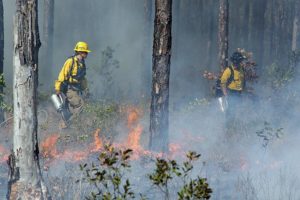
Connor’s education and unconventional career path can serve as a great blueprint for anyone who loves the American West and wants a life centered around land, conservation, and natural resources. When I was in my early twenties, I would’ve loved to meet a guy like Connor who could point me in the right direction. So in this episode, we talk in depth about his career and his ability to “put himself out there” to create exciting professional opportunities. We dig deep into his thoughts on conservation in the West, as well as issues related to forest fires throughout the country. Connor loves to read and learn, so he also has tons of great book and film recommendations.

We cover a ridiculous amount of information, so be sure to check out the episode notes below for the full list of topics we discuss. Enjoy!
All photos courtesy of Connor Coleman
Click Here to Download on iTunes
—
Click Here to Download on Stitcher
—
—
Episode Notes
Topics Discussed
Information Referenced
- Connor Coleman – LinkedIn, Facebook, and Instagram
- Catawba College
- Duke University
- Aspen Valley Land Trust
- Nature Conservancy
- Chico Basin Ranch
- Zapata Ranch
- Land Trust for Central North Carolina
- Jim Howell podcast interview
- For the Love of Land by Jim Howell
- Allen Savory’s TED talk
- 5 Point Film Festival
- Longleaf Pine
Connor’s Book Recommendations
- Fire a Brief History – Stephen Pyne
- The Big Burn: Theodore Roosevelt and the Fire that Saved America
- Fire on the Mountain – John Maclean
- Young Men and Fire – Norman Maclean
- Living with Fire: Fire Ecology and Policy for the 21st Century
- The Fire Line: The Story of the Granite Mountain Hotshots (Yarnell Fire)
- American Buffalo: In Seach of a Lost Icon – Steven Rinella
- Call Me Ted
- Last Stand: Ted Turner and His Quest to Save a Troubled Planet
- The Wilderness Warrior: Theodore Roosevelt and His Crusade for America – Douglas Brinkley
- Anthill: A Novel – E.O. Wilson
- My Side of the Mountain – Jean Craighead George
- Adventures of Tom Sawyer
- Adventures of Huckleberry Finn
- Cradle of Forestry in America – Carl Schenck
- Wild Idea: Buffalo and Family in a Difficult Land
Connor’s Film Recommendations
Taylor Keen – Tribal Truth Seeker
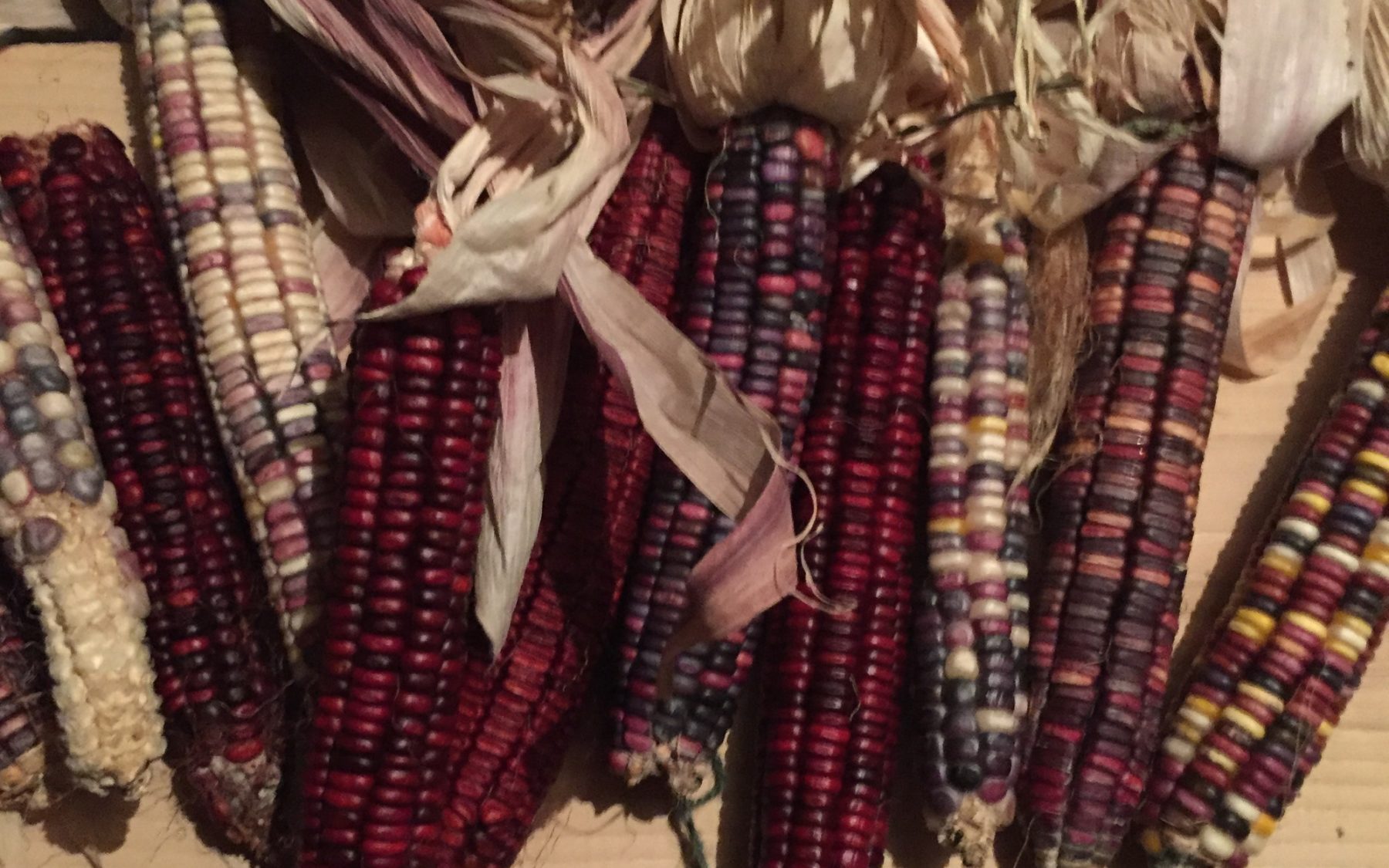
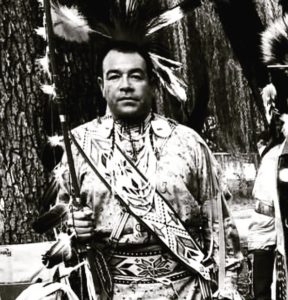
Taylor Keen is a teacher, community builder, and Native American thought leader based out of Omaha, Nebraska. His back story is as diverse as it is impressive—he’s a member of both the Omaha Tribe and the Cherokee Nation, attended Dartmouth College (BA) and Harvard University (Masters of Public Policy, MBA), and enjoyed a successful stint in corporate America before returning to Nebraska to teach entrepreneurship and management at Creighton University. His most recent undertaking is Sacred Seed, a project with the goal of preserving Native American heritage and history through collecting, growing, and spreading the seeds of corn and other traditional Native American foods.
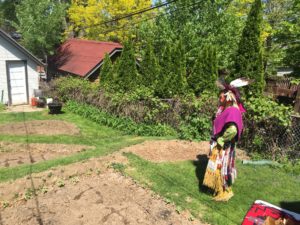
The writer Wallace Stegner theorized that people generally fit into one of two categories—“Boomers” or “Stickers.” Boomers are “those who pillage and run” and want “to make a killing and end up on Easy Street.” Stickers are just the opposite—they are “motivated by affection, by such a love for place and its life that they want to preserve it and remain in it.”1 Taylor is the walking embodiment of a Sticker. Given his drive, intelligence, and education, he could’ve followed the path of the Boomer and pursued any number of careers. But a deep love of his Native American heritage and his community called him back home to teach, lead, and live a life devoted to service of others. It’s an inspiring story.
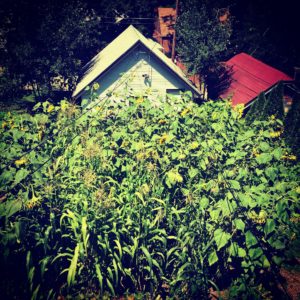
I could’ve talked to Taylor for hours and I only asked about a third of the questions I had prepared, but we still managed to dig into a wide variety of fascinating topics. We discussed the history and mission of Sacred Seed and where he sees the project going in the future. We talked about his path from the West to the Ivy League, the decisions that led him to transition from corporate America to higher education, and some very interesting Native American history. One of my favorite parts of our conversation was Taylor’s recounting the advice he received from his grandfather soon after graduating from Harvard Business School.
This was a very enlightening conversation for me, and I greatly appreciate Taylor taking the time to chat. I encourage you to visit the Sacred Seed website and watch the video—you can find links to everything we discuss in the episode notes on the webpage. Enjoy!
All photos courtesy of Taylor Keen
1 Wendell Berry, It All Turns on Affection (2012)
Click Here to Download on iTunes
—
Click Here to Download on Stitcher
—
—
Episode Notes
Topics Discussed
Information Referenced
- Taylor Keen – Creighton University
- Sacred Seed
- Taylor on Facebook and Instagram
- Sacred Seed article in the Omaha World Herald
- Sacred Seed video
- Omaha Tribe
- Cherokee Nation
- Corn Among the Indians of the Upper Missouri by George Francis Will and George E. Hyde
- Bury My Heart at Wounded Knee: An Indian History of the American West by Dee Brown
- Custer Died for Your Sins: An Indian Manifesto by Vine Deloria, Jr.
- God is Red: A Native View of Religion by Vine Deloria, Jr.
- Braiding Sweetgrass: Indigenous Wisdom, Scientific Knowledge and Teachings of Plants by Robin Wall Kimmerer
- Mitakuye Oyasin: We Are All Related by A.C. Ross
My 10 Favorite Books of 2016
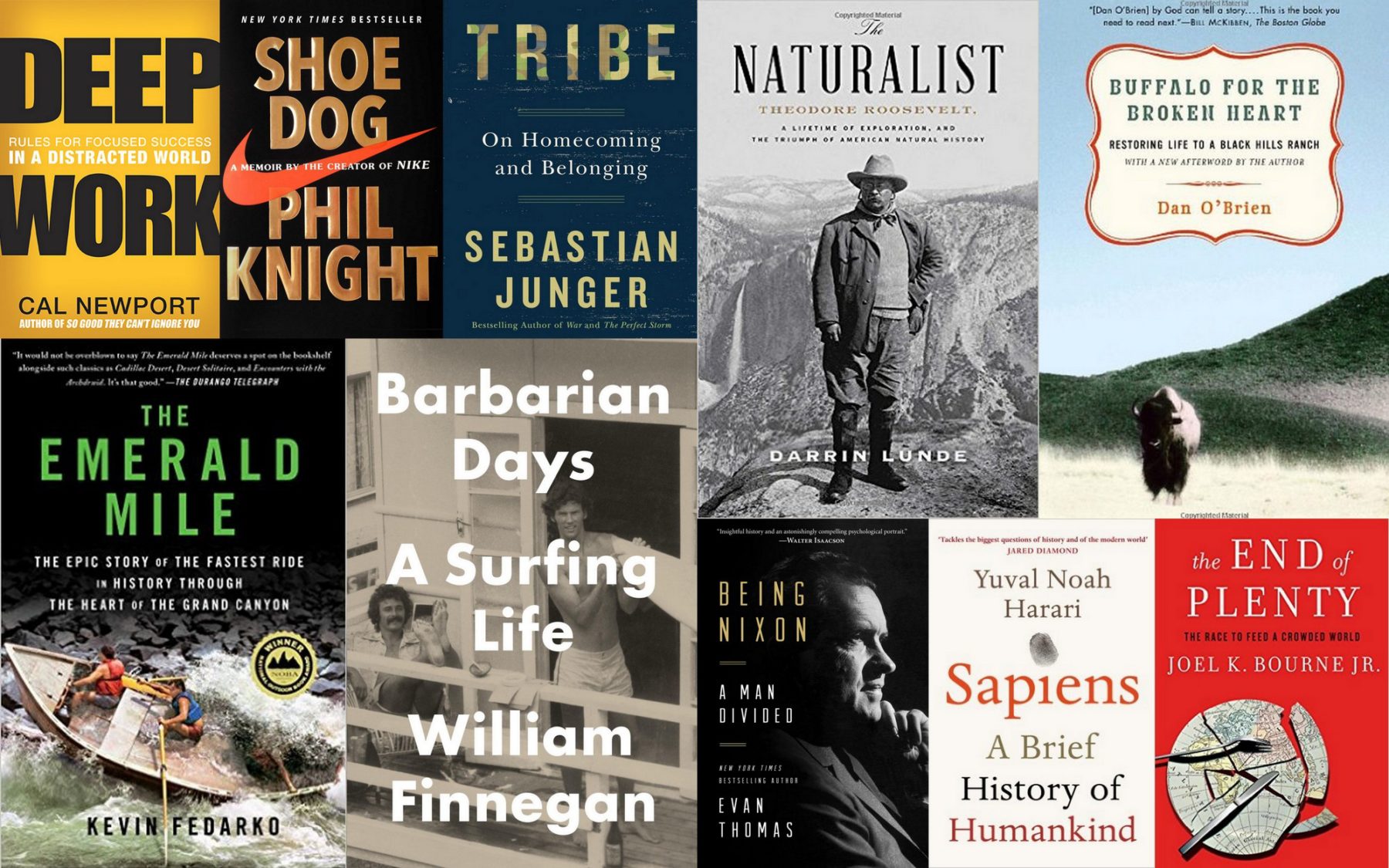
My 10 Favorite Books of 2016
As you may know, I send out a brief bimonthly email in which I recommend some of the best books I’ve recently read. This year, I recommended 37 books, which is an admittedly ridiculous amount of reading. In an effort to distill it down to a more user-friendly level, here are my top ten favorite books that I read in 2016. The subject matters vary widely, but I wholeheartedly recommend them all.
I kept the descriptions as brief as possible, so click on the monthly list link to view the original email with my full review. To sign up for the future book recommendation emails, follow this link or just send me an email.
Barbarian Days: A Surfing Life by William Finnegan – One of my favorite books of all time, and you don’t need to be a surfer to fully appreciate it. A true work of art. (Sep/Oct list)
Tribe: On Homecoming and Belonging by Sebastian Junger – I think about this book on almost a daily basis, and I believe Junger’s ideas on community and purpose explain many of the societal challenges facing the U.S. today. (Jul/Aug list)
Deep Work: Rules for Focused Success in a Distracted World by Cal Newport – This book reshaped the way I approach my professional and personal projects, and it made me even more skeptical of social media than I had been. (Mar/Apr list)
Shoe Dog: A Memoir by the Creator of Nike by Phil Knight – The best business memoir I’ve ever read. (Nov/Dec list)
Sapiens: A Brief History of Humankind by Yuval Noah Harari – Extremely interesting theories on the evolution of humans, and it actually pairs well with Tribe mentioned above. (Jan/Feb list)
The Emerald Mile: The Epic Story of the Fastest Ride in History Through the Heart of the Grand Canyon by Kevin Fedarko – Part history of the American West and part western water policy primer, all layered on top of a wild, exciting adventure narrative. (May/Jun list)
The Naturalist: Theodore Roosevelt, A Lifetime of Exploration, and the Triumph of American Natural History by Darrin Lunde – I’ve read an absurd number of TR books, so my standards are high—this one not only explores a little known (but super-interesting) part of TR’s life, but it also details the rise of America’s natural history movement. (Jul/Aug list)
Being Nixon: A Man Divided by Evan Thomas – Richard Nixon was a strange, strange, strange man. (Jan/Feb list)
Buffalo for the Broken Heart: Restoring Life to a Black Hills Ranch by Dan O’Brien – Conservation, bison, ranching, regenerative agriculture, emotional memoir, and a natural history lesson all rolled into one book. (Nov/Dec list)
End of Plenty: The Race to Feed a Crowded World by Joel K Bourne Jr. – A cautionary examination of what lies ahead if the we can’t figure out a solution to the coming global food crisis, followed hopeful examples of innovators who are attacking the challenge head on. (Sep/Oct list)
Camrin Dengel – Slow Living in the American West
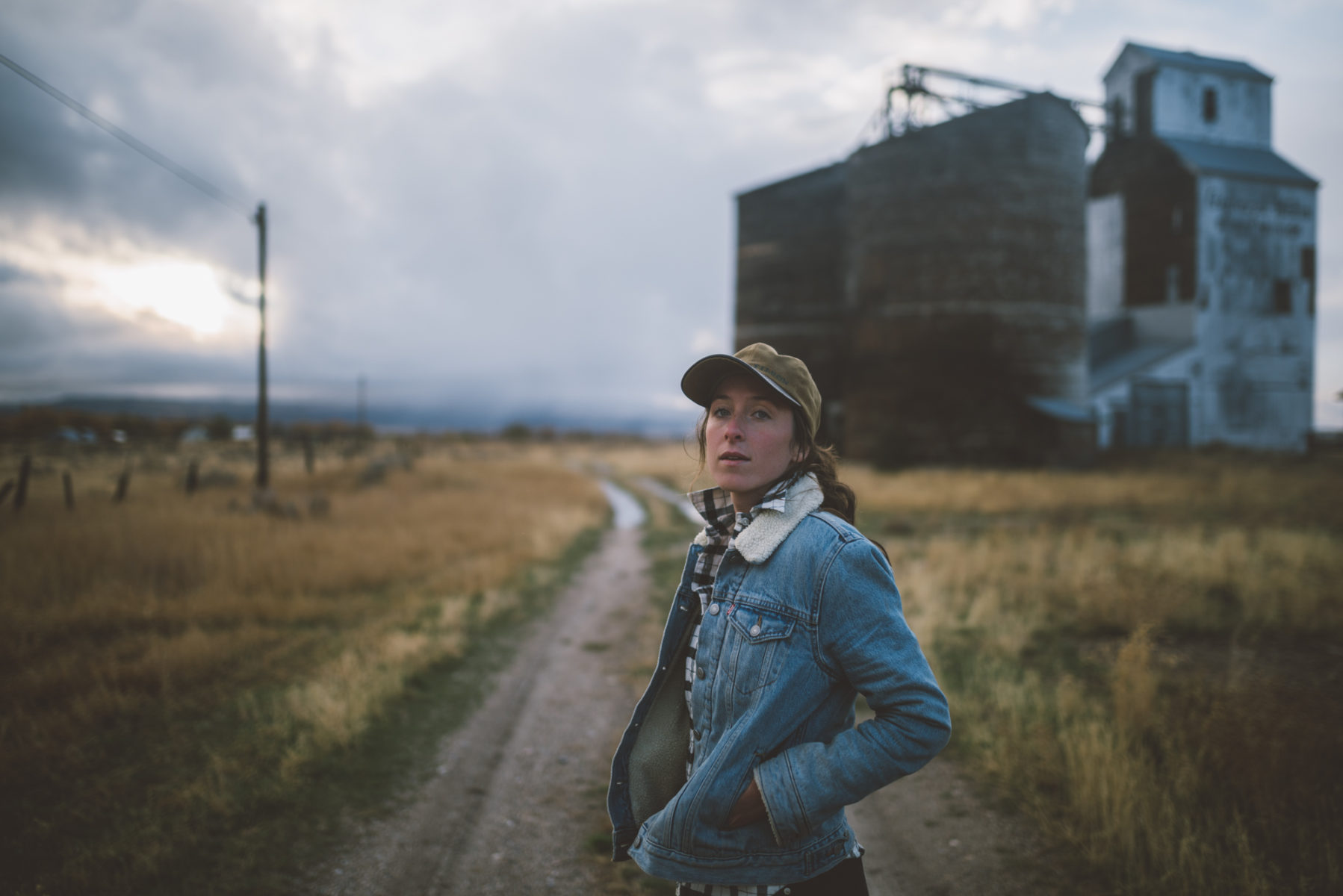
Camrin Dengel – Slow Living in the American West
Camrin Dengel is a professional lifestyle photographer who lives and works on the quiet side of the Teton Mountain Range in Teton Valley, Idaho. Her work focuses on a broad range of subjects, with an emphasis on sustainable agriculture, hunting, fishing, and life in and around her mountain community. In her work and leisure, Camrin is a devoted proponent of slow living, and she strives to approach her profession and life in a manner that is intentional, simple, meaningful, and positive.
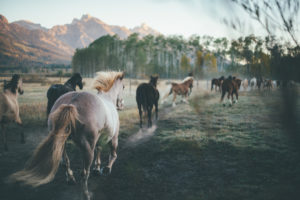
Growing up in Valdez, Alaska gave Camrin a unique perspective and toughness (she calls it “stubbornness”) that have allowed her to pursue her passion for art full time, while staying true to her ideals and enjoying a slow-living lifestyle. She attended college on a running scholarship with the intention of becoming an engineer, but decided midway through that art and photography were her true calling. After graduation, she moved straight to Teton Valley where she has built a life and business centered around documenting the people and places that make the American West such a special place to live.
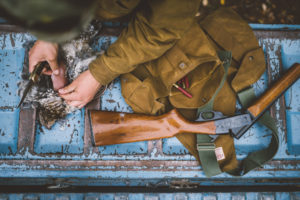
I’ve spent a lot of time in Teton Valley and can honestly say that Camrin’s work captures the landscapes and lifestyle more authentically than any artist I’ve ever seen. She is obviously a talented photographer, but she is also a super-interesting person who has managed to sidestep a good deal of the “busyness” and distractions that dominate many of our lives. In our conversation, we discuss her career trajectory, and also her love for the community of Teton Valley. We dig deep into the idea of slow living, and she offers some thoughts on ways for people to adopt a slower, more intentional lifestyle. As usual, we discuss favorite books, documentaries, and challenges and opportunities facing the American West.
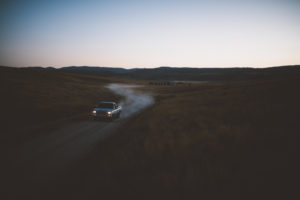
This is a really fun episode full of lots of great info. Be sure to check out the episode notes for links to everything we discuss. Hope you enjoy!
All photos courtesy of Camrin Dengel
Click Here to Download on iTunes
—
Click Here to Download on Stitcher
—
—
Episode Notes
Topics Discussed
Information Referenced
- Camrin Dengel
- Camrin’s Instagram and Facebook
- Teton Valley, Idaho
- Filson Life – Depth in the Field: Out West with Camrin Dengel
- Filson
- Gabe Rogel
- Humbolt State University
- Alaska Marine Conservation Council
- Forest Woodward
- Rocky Mountain School of Photography
- Mike Tittel
- Turn Here Sweet Corn: Organic Farming Works by Atina Diffley
- The Noisy Plume
- Unbranded
- Ed’s Ben Masters interview
- Unbroken Ground
- McCarthy, Alaska
- Mt. Marathon
- Mt. Marathon video
- The End of Plenty: The Race to Feed a Crowded World by Joel K Bourne
Jason Schlarb – Service, Adventure, and Ultra-Endurance

Jason Schlarb is a champion ultrarunner whose notable achievements include winning the Hardrock 100 (2016) and Run Rabbit Run 100 (2013 & 2015), as well as finishing as the top American in the Ultra Trail du Mont Blanc (4th place, 2014). He is also an accomplished adventurer who, among other things, has skied the entire Hardrock 100 course in winter and explored remote regions of Patagonia and New Zealand, all while filming his exploits and then creating engaging, authentic films though his company Schlarb-Wolf Productions. Most impressively, Jason is a veteran who served for 10 years as an officer in the United States Air Force, which included a five-month deployment to Iraq and his earning the rank of Major.
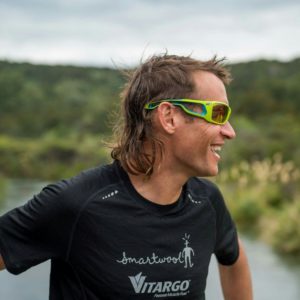
A competitive soccer player for most of his youth, Jason made the switch to running relatively late in the game when he joined the cross country team as a high school senior. But his natural talent for endurance combined with a relentless competitive streak allowed him to walk on to a Division I cross country team, where he excelled throughout his college career. After years of focusing exclusively on road races ranging from 10Ks to marathons, he made the switch to trail running and has never looked back. Jason, his wife Maggie, and son Felix have shaped their lives around the pursuit of a purpose-driven, rewarding, and adventurous lifestyle, and they currently reside on the southern end of Colorado’s San Juan Mountains, just outside of Durango.
Jason is a fascinating guy with an infectiously positive attitude, which made for a fun and in-depth conversation. We cover a broad range of topics, including his athletic background, his journey to ultrarunning, and some of his adventures around the world. We discuss his time in the military and how those 10 years of service affect his outlook and approach to sports and life. We chat about his thoughts on competition, mental toughness, and the benefits of positive thinking. Whether you’re an athlete or not, there are huge amounts of wisdom to be gleaned from Jason’s experiences and perspective.
This was a fun conversation and I really appreciate Jason taking the time to chat. I hope you enjoy it as much as I did!
Photo courtesy of Jason Schlarb – Top photo by Eduardo Castro
Click Here to Download on iTunes
—
Click Here to Download on Stitcher
—
—
Episode Notes
Topics Discussed
Information Referenced
- Jason Schlarb
- Jason’s Instagram and Facebook
- Schlarb-Wolf Productions films on Vimeo
- Altra
- Hardrock 100
- San Juan Mountains
- Handies Peak
- Shoe Dog: A Memoir by the Creator of Nike by Phil Knight
- Montana State University
- United States Air Force
- Kilian Jornet
- North Face Endurance Challenge
- Run Rabbit Run 100
- Jason’s iRunFar interview discussing postive thinking
- Maggie Schlarb
- Jason and Maggie’s Coaching Services
- Joel Wolpert
- Noah Howell
- Monkey Wrench Gang by Edward Abbey
- Into the Wild by Jon Krakauer
- Fight Club
- 180 South
- Meru
- Touching the Void: The True Story of One Man’s Miraculous Survival by Joe Simpson
- Into Thin Air: A Personal Account of the Mt. Everest Disaster by John Krakauer
- Diagonale des Fous
- Ultra Trail du Mont Blanc (“UTMB”)
Larry Yaw – Creating a Sense of Place in the New West

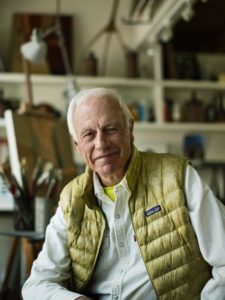
Larry Yaw is a renowned architect based in Colorado’s Roaring Fork Valley whose work connects people with nature using contemporary, sustainable, conservation-focused designs. Growing up in rural Montana gave Larry a deep appreciation for the utilitarian character of ranch homes and their thoughtful integration into the landscape, aspects that form the foundation of much of his work today. Through his design, Larry has demonstrated a unique ability to pay homage to the past while boldly pushing beyond preconceived notions of architecture in the American West.
If I had to use one word to describe Larry it would probably be “adventurous”—a quest for adventure seems to guide all aspects of his professional and personal lives. As you’ll hear in our conversation, Larry has traveled the world many times over, sometimes with his full family in tow, seeking out enriching experiences everywhere from the South Pacific to the Swiss Alps. He is also intellectually adventurous, as evidenced by his deep knowledge of history, conservation, Native Americans, and many other subjects related to the West and beyond. Physical adventures are a daily occurrence for Larry, whether it’s pedaling single track, stalking trout with his fly rod, hiking in the high mountains around Aspen, or shooting birds on the Montana prairies. All of these experiences provide the fuel that keeps Larry’s professional creative engine firing at turbo speed, decade after decade.
This was a super-fun conversation, and I came away from it inspired and enlightened. We discussed a broad range of topics including Larry’s architecture, his creative process, and how he has managed to stay consistently creative for so long. We chatted about his early years in Montana, some of his adventures around the world, and his thoughts on conservation in the American West. Larry is a true student of the West, so he had plenty of book recommendations. There is a lot of great information in this interview, so don’t forget to check the episode notes for links to everything we discuss.
Photo courtesy of Larry Yaw
Click Here to Download on iTunes
—
Click Here to Download on Stitcher
—
—
Episode Notes
Topics Discussed
Information Referenced
- Cottle Carr Yaw Architects
- Great Falls, Montana
- Aconcagua
- The Architect Explorer by Lindsay Yaw Rogers
- Roaring Fork Conservancy
- The Heart of Everything That Is: The Untold Story of Red Cloud, An American Legend by Bob Drury and Tom Clavin
- Empire of the Summer Moon: Quanah Parker and the Rise and Fall of the Comanches, the Most Powerful Tribe in American History by S.C. Gwynne
- Blood and Thunder: The Epic Story of Kit Carson and the Conquest of the American West by Hampton Sides
- Citizens of London: The Americans Who Stood with Britain in Its Darkest Hour by Lynee Olson
- Pete McBride
- Pete McBride’s films
- The Emerald Mile: The Epic Story of the Fastest Ride in History Through the Heart of the Grand Canyon by Kevin Fedarko
- Yvon Chouinard
Pat O’Toole – Six Generations of Balanced Ranch Stewardship

Pat O’Toole is a rancher who, along with his family, owns and operates the Ladder Ranch, a large-scale cattle and sheep operation that straddles the Colorado-Wyoming border. Pat’s wife Sharon’s family established the ranch in the Little Snake River Valley back in 1881, and now, six generations later, the family’s hard work, thoughtful vision, and a deep respect for the land have made the Ladder Ranch a shining example of the combined effect of productive agriculture and land conservation.

Pat’s background is far outside of the norm for many multi-generational ranchers—he grew up in south Florida, majored in philosophy in college, and just before he and his wife enrolled in law school, they decided to return to her family’s land to continue in the family business of ranching. Since then, the O’Tooles have not only run a financially successful operation, but they have simultaneously improved wildlife, bird, and fish habitat throughout the ranch. By thinking outside the box and partnering with both non-profit and governmental organizations, the Ladder Ranch has set a new standard for conservation, creative problem solving, and sustainable land stewardship.
We had a fun, in-depth conversation that covered a wide variety of topics that will be of interest to anyone who loves the West, whether you’re involved in ranching or not. We discuss Pat’s thoughts on cooperation between ranchers and environmentalists, and how the relationship between the two groups is getting stronger and more positive every year. We chat about water in the West, and why it is important to keep water on ranches rather than being sold off to municipalities. We also dig into Pat’s unconventional background, his thoughts on the future of land conservation, and of course, favorite books, history, and his favorite location in the West.
Pat is an interesting guy who has thought very deeply on issues related to the American West, including conservation, water, and agriculture. There’s a lot of great information in this interview, so I hope you enjoy!
Photo courtesy of Pat O’Toole
Click Here to Download on iTunes
—
Click Here to Download on Stitcher
—
—
Episode Notes
Topics Discussed
- Ladder Ranch
- Lonesome Dove by Larry McMurtry
- Homestead Acts
- In depth discussion of water rights – Spencer Williams podcast
- National Audubon Society
- Rotational grazing
- George R. Salisbury, Jr. (Pat’s father-in-law)
- Confessions of a Maverick: An Autobiography by Farrington Carptenter
- Erik Glenn – Saving Colorado One Ranch at a Time
- Senator Larry Hicks
- Sand County Foundation
- Ladder Ranch’s Leopold Conservation Award
- Family Farm Alliance
- Partners for Conservation
- Theodore Roosevelt in the Badlands: A Young Politician’s Quest for Recovery in the American West by Roger Di Silvestro
- Jefferson’s America: The President, the Purchase, and the Explorers Who Transformed a Nation by Julie Fenster
- The Wilderness Warrior: Theodore Roosevelt and the Crusade for America by Douglas Brinkley
- The Apache Wars: The Hunt for Geronimo, the Apache Kid, and the Captive Boy Who Started the Longest War in American History by Paul Andrew Hutton
- Blood and Thunder: The Epic Story of Kit Carson and the Conquest of the American West by Hampton Sides
- Lonesome Dove movie
Investment and Conservation in Crested Butte
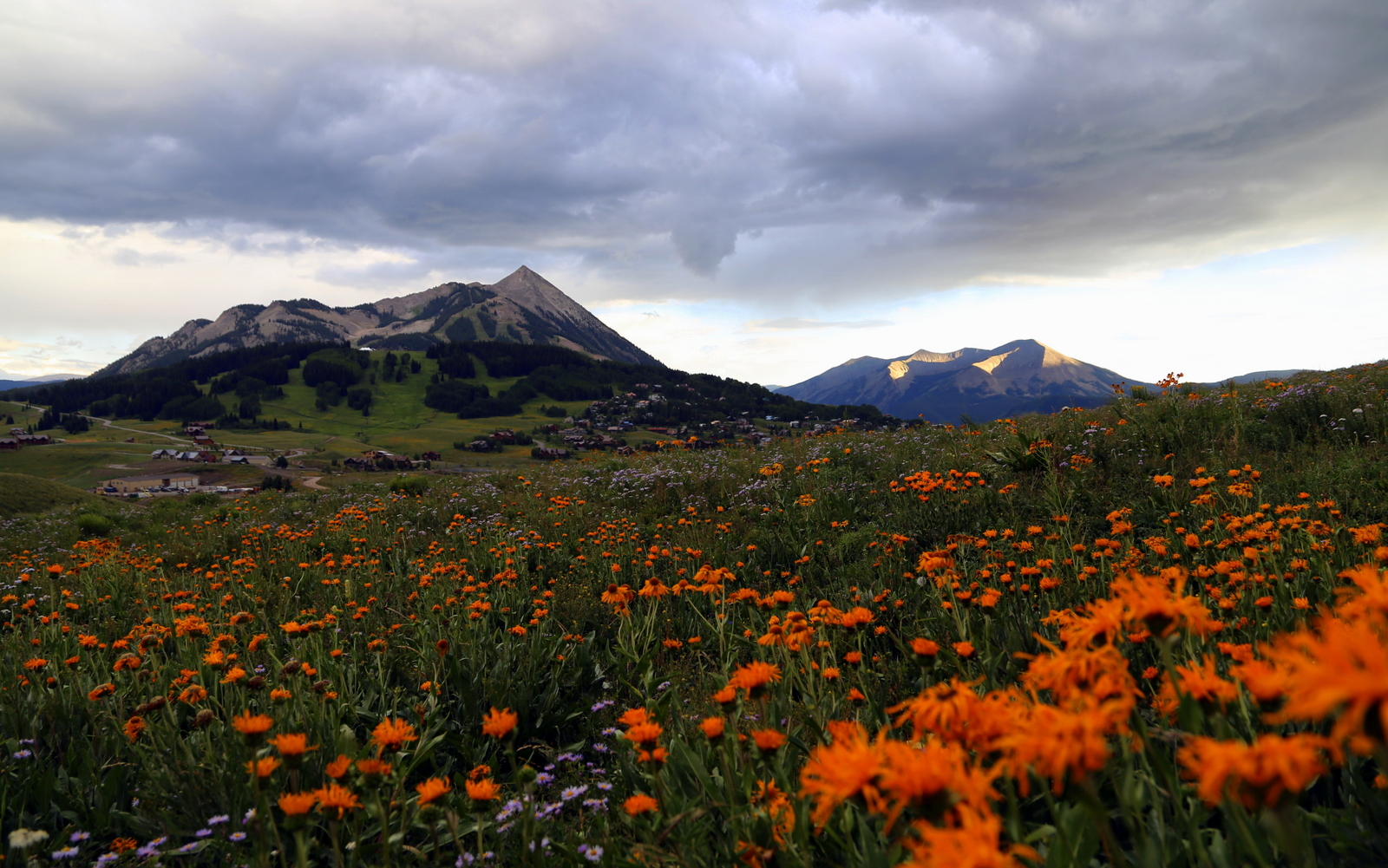
Click over to the Mirr Ranch Group blog for my most recent post about some of the ambitious conservation projects taking place around Crested Butte, Colorado, as well as information on one of the most attractive remaining investment and conservation properties in the valley.
Investment and Conservation Opportunity in Crested Butte
—
Joe Grant – Self-Powered Alpine Adventurer

Joe Grant is a highly accomplished professional ultra-runner and all-around endurance athlete who has completed some of the endurace world’s most challenging events—several Hardrock 100s, UTMB 100, Western States 100, and Bighorn 100, as well as the Arizona Trail Race (750 miles on mountain bike), Iditarod Trail Invitational 350, and many, many more. He most recently completed the “Tour de 14ers,” a solo, self-supported and self-powered link-up of all of Colorado’s 14,000-foot mountains, by bicycle and on foot. For those of you counting, that’s climbing 57 fourteeners, accessed all by bike, in 31 days.
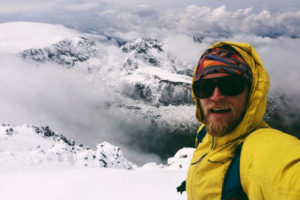
But Joe’s career as a professional athlete makes up only a small portion of his personal identity. He is a talented writer and photographer, as well as a voracious reader. He was born in England and grew up in France, so he has a global perspective that gives him a unique point of view. He is obviously driven to pursue challenging goals, yet he has always been focused more on the process than the end result. Joe’s athletic achievements seem to combine his desire for continued personal growth with a genuine love of wild places and a strong conservation ethic.
Because he has such a depth of knowledge on so many interesting subjects, talking with Joe solely about running would only begin to scratch the surface. So after a rundown of his recent 14er adventure, we went deep into his thoughts on adventure, endurance, and pushing one’s personal boundaries. He talked about his upbringing and how family and friends have helped shape his outlook on life, giving him the confidence to pursue an unconvential, yet extremely fulfilling lifestyle. We of course talked a lot about books, as well as goal setting, daily practices, and his thoughts on conservation.

I’m obviously biased, but I loved this conversation and really appreciate Joe taking the time to chat. I encourage you to check him out on social media (Instagram, Facebook, Twitter), and read some of his columns. If you like people who are passionate, humble, deep-thinking, and all-around interesting, you’ll enjoy getting to know Joe. Enjoy!
All photos courtesy of Joe Grant
Click Here to Download on iTunes
—
Click Here to Download on Stitcher
—
—
Episode Notes
Topics Discussed
- Joe Grant
- Joe’s Instagram, Facebook, Twitter
- Joe’s iRunFar column: From My Doorstep
- Tour de 14ers
- Hardrock 100
- Colorado 14ers – 14ers.com
- Scarpa
- REEB Cycles
- iRunFar interview – smiling during running
- Geoff Roes
- Satish Kumar – Resurgence
- No Destination: Autobiography of a Pilgrim by Satish Kumar
- Gary Snyder
- The Abstract Wild by Jack Turner
- Shadows of the Koyukuk: An Alaskan Native’s Life Along the Riverby Sidney Huntington
- Hubert Selby Jr.
- David Gessner
- All the Wild that Remains: Edward Abbey, Wallace Stegner, and the American West by David Gessner
- The Prophet of Dry Hill: Lessons from a Life in Natureby David Gessner
- Articles about the sale of public lands: Here, here, here, and here
Ben Masters – Conservation Through Innovative Filmmaking
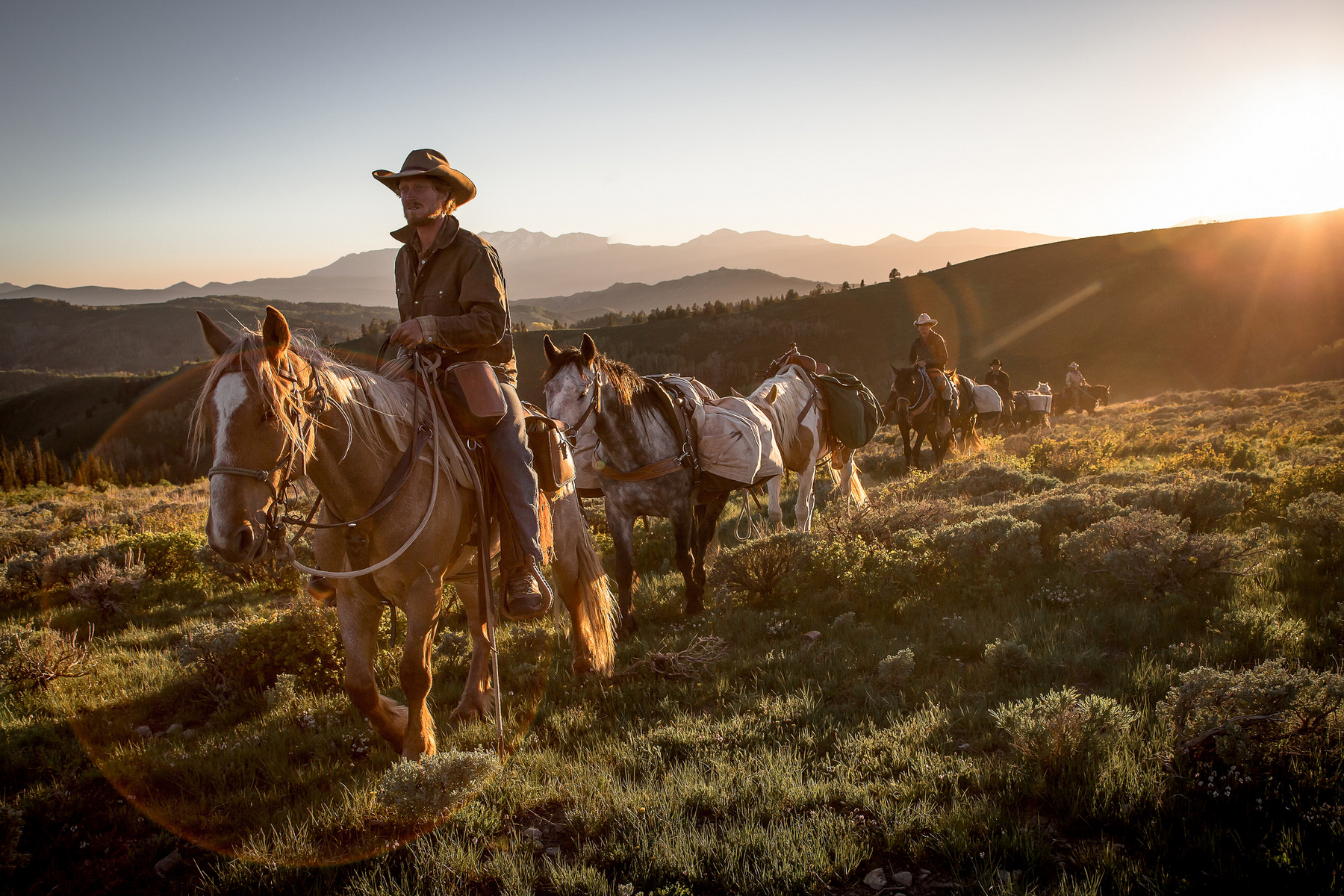
Ben Masters is a filmmaker and conservationist whose work explores some of the most important conservation challenges facing the American West today. He was the mastermind behind the award-winning documentary Unbranded, which tells the story of Ben and his three buddies who ride wild mustangs from Mexico to Canada as part of an epic five month-adventure. The film also examines the Bureau of Land Management’s Wild Horse Program, a well-intentioned, but now controversial, government program created to protect the wild horses that roam the western U.S. For those who love the American West, Unbranded is one of the best documentaries in recent memory—it combines hardcore adventure with important conservation issues, all while accurately capturing the true beauty of the American West.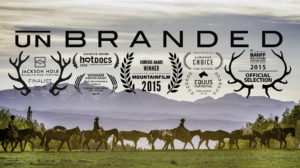
Conservation is the common theme running through all of Ben’s work, and his passion is fortified with a deep knowledge of natural history, public lands, and policy issues related to the American West. His expertise recently earned him a spot on the BLM’s Wild Horse and Burro Advisory Board, the group tasked with solving the challenging issues surrounding the program he profiled in Unbranded. His most recent film, Pronghorn Revival, is the story of Texas wildlife biologists capturing and relocating a struggling herd of pronghorns (i.e. antelopes). Not one to rest on his laurels, Ben is working hard on more conservation projects to be revealed in the coming months.
 When we recorded this episode, Ben was less than a day away from leaving on a multi-week guiding trip to the area around Yellowstone National Park, so I really appreciated him making the time to chat. In just under an hour, we managed to cover a wide range of conservation-related topics: the BLM’s Wild Horse Program, invasive species in the American West, thoughts on hunting, as well as Ben’s personal background, favorite books, favorite documentaries, and a crazy horse stampede story… with plenty of other intesting subjects thrown in.
When we recorded this episode, Ben was less than a day away from leaving on a multi-week guiding trip to the area around Yellowstone National Park, so I really appreciated him making the time to chat. In just under an hour, we managed to cover a wide range of conservation-related topics: the BLM’s Wild Horse Program, invasive species in the American West, thoughts on hunting, as well as Ben’s personal background, favorite books, favorite documentaries, and a crazy horse stampede story… with plenty of other intesting subjects thrown in.
If you haven’t already, be sure to check out Unbranded. You’ll love it. In the meantime, enjoy my conversation with Ben Masters.
All photos courtesy of Ben Masters
Click Here to Download on iTunes
—
Click Here to Download on Stitcher
—
—
Episode Notes
Topics Covered
Information Referenced
- Ben Masters
- Unbranded
- Pronghorn Revival
- BLM Wild Horse and Burro Program
- Wild Free Roaming Horse and Burro Act
- Professor Douglas Slack
- The Wilderness Warrior – Theodore Roosevelt and the Crusade for America by Douglas Brinkley
- Gifford Pinchot
- The Big Burn – Teddy Roosevelt and the Fire That Save America by Timothy Egan
- Invasive species
- Pronghorn
- Yeti
- The Emerald Mile – The Epic Story of the Fastest Ride in History Through the Heart of the Grand Canyon by Kevin Fedarko
- The Song of the Dodo: Island Biogeography in an Age of Extinction by David Quammen
- The Naturalist – Theodore Roosevelt, A Lifetime of Exploration, and the Triumph of American Natural History by Darrin Lunde
- Almost Sunrise
- Heroes and Horses
- Phill Baribeau and Korey Kaczmarek
- Yellowstone National Park
Stephen Smith – Adventures in Photography, Motorcycles, and Ranches
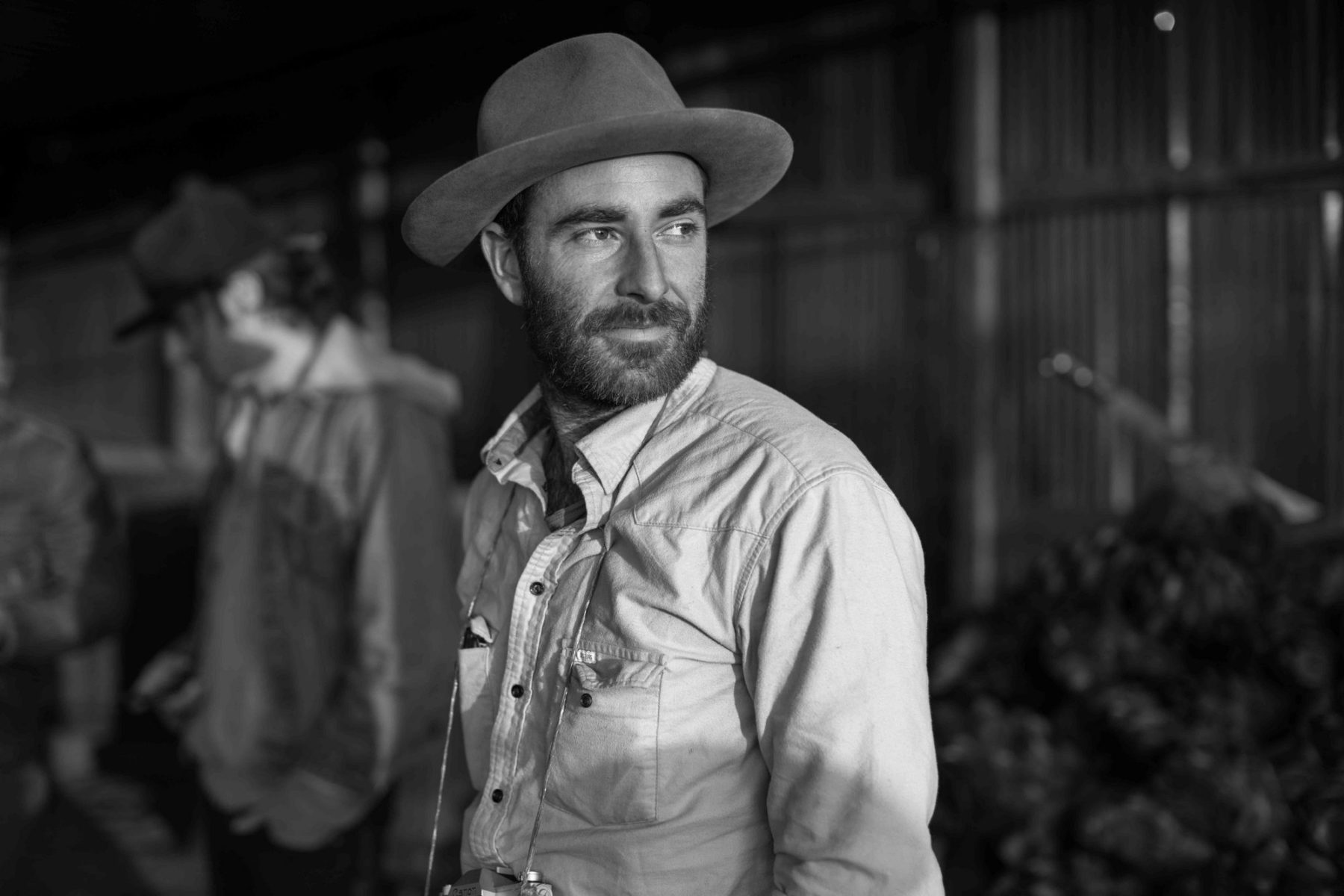
Stephen Smith – Adventures in Photography, Motorcycles, and Ranches
Stephen Smith is an agrarian, adventure, and lifestyle photographer who has successfully combined his love of ranches, farms, motorcycles, and travel into a full-time career in professional photography. Thanks to his artistic eye, hard work, persistence, and willingness to take risks, Stephen has successfully created a niche for himself in the crowded arena of professional photography. (Check him out on Instagram.)
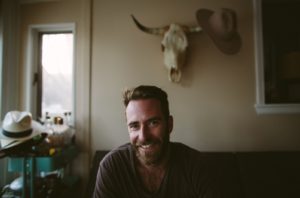
He is obviously a naturally talented artist, but it seems that a great deal of Stephen’s success can be traced back to the fact that he is committed to putting himself in unique—often difficult, uncomfortable, or scary—situations that allow him to capture one-of-a-kind experiences and perspectives. Among other things, he has worked on a 90,000-acre Colorado cattle ranch, taken a five-month solo motorcycle trip through South America, and put in time at several California and Colorado vineyards, all while constantly shooting photos and refining his craft.
Stephen’s solid understanding of agriculture and years of adventure are evident in his work. His images are as authentic as they are artistic, and he knows how to capture the true spirit of a person, place, animal, or experience in a fresh style that creates a genuine connection with the audience. I came across Stephen’s agricultural photography several years ago and was immediately drawn in. (And keep in mind, I can be a bit jaded when it comes to ranch photos—I look at them all day as part of my job.) I have been a fan of his work ever since.
I was super-excited to finally meet Stephen and learn more about his work and personal story. We had a fun (and funny) conversation and covered a wide range of interesting topics. We dug into his connection to agriculture and talked in depth about how ranches and farms play an important role in land conservation. We talked about motorcycles and some of his adventures. We discussed the importance of international travel and his lessons learned from immersion in foreign cultures. We obviously chatted in detail about photography, as well as an insane bear story that you definitely need to hear.
Cool guy. Thoughtful conversation. Crazy stories. Great episode!
All photos courtesy of Stephen Smith
Click Here to Download on iTunes
—
Click Here to Download on Stitcher
—
—
Episode Notes
Topics Covered
Information Referenced
- Stephen Smith website
- Stephen on Instagram – @iamstephensmith
- Mendoza, Argentina
- Olivia Brion
- Peak Spirits
- Jack Rabbit Hill Farm
- White Oak Pastures
- Savory Institute
- Jim Howell podcast
- For the Love of Land: Global Case Studies of Grazing in Nature’s Image by Jim Howell
- Responsible Grazing – The Foundation of a Healthy Ranch Ecosystem by Ed Roberson
- Epic Bar
- Holistic Management
- Overland Journal
- Stephen’s Overland Journal cover shot
- BMW Scrambler
- Sinuhe Xavier
- Grapes of Wrath by John Steinbeck
- Long Way Round
- Long Way Down
- Sycamore Brewing
- Rule of Thirds
- Gov’t Mule
Nicholas Coleman – Painting the Heritage and History of the American West
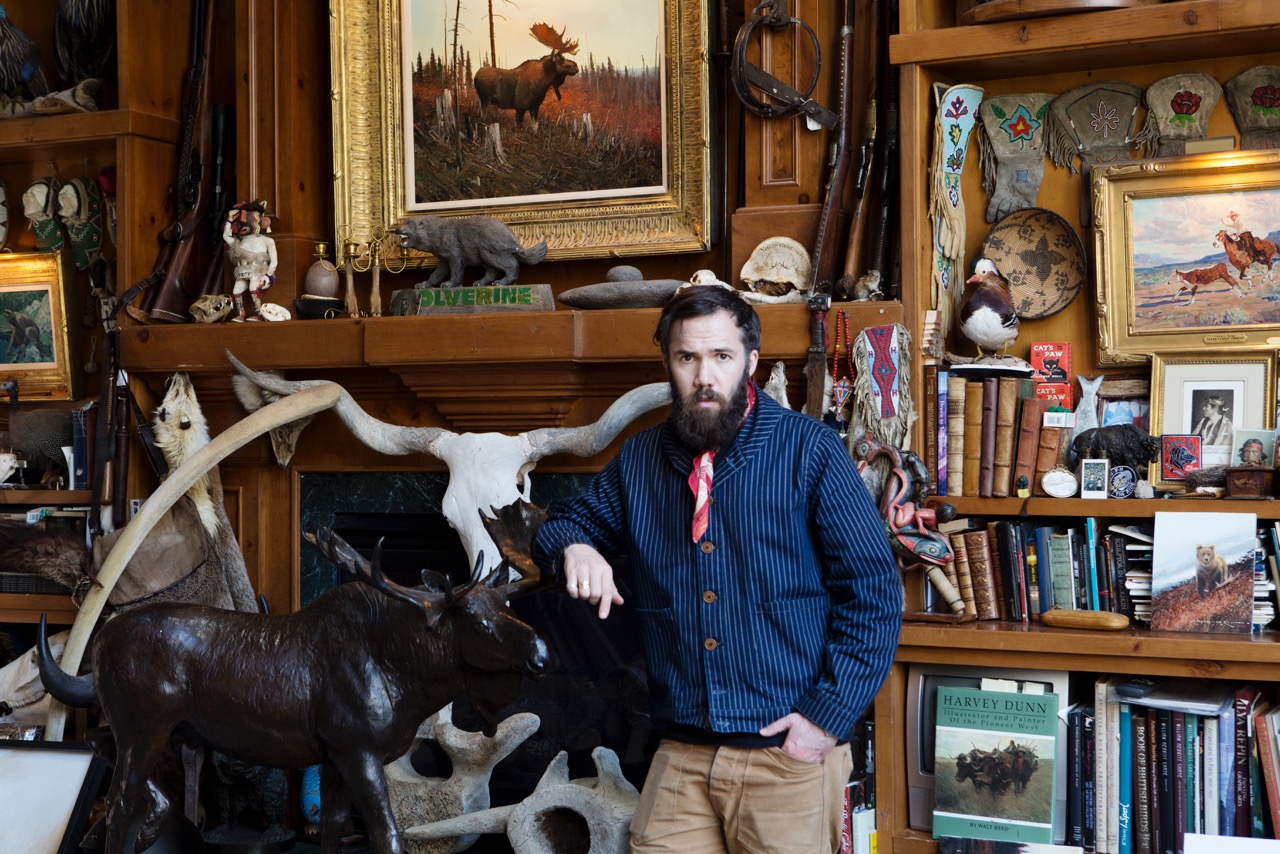
Nicholas Coleman – Painting the Heritage and History of the American West
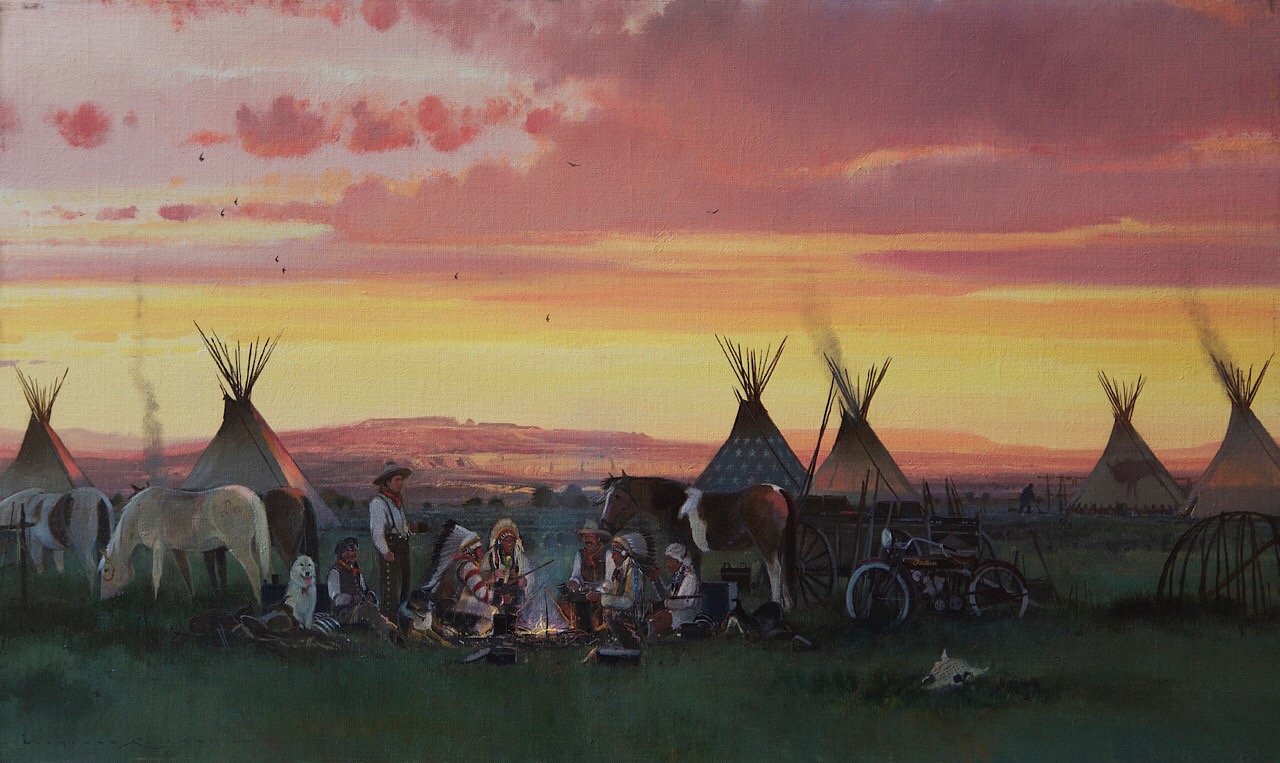
Nicholas Coleman is an ultra-talented, hard-working artist based out of Provo, Utah, and he paints some of the most interesting and beautiful works I’ve ever seen. His primary subject matter is the American West, with a focus on landscapes, natural history, wildlife, Native American culture, and exploration. I came across Nick’s work on Instagram of all places—in the midst of the app’s thousands of images, noise, and distractions, one of Nick’s images boldly stood out from all the rest. It stood out so much that I wanted more, so I went to his website and was blown away by his work. The more I learned about Nick, the more impressed I became—he is a multifaceted individual with a fascinating back story.
Nick is not your stereotypical artist. He is a devoted hunter, fisherman, and trapper, and he’s also a voracious reader who probably knows more about western history than many college professors. He has a focused and disciplined approach to his art, working six days a week and never sitting around waiting to “get in the mood” to paint. With his deep love of art and the West, combined with his rock solid work ethic, it’s no surprise that he has been able to build a stellar reputation in the super-competitive and challenging world of professional art.
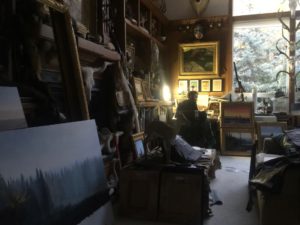
I could’ve talked to Nick for hours, because so many of his interests overlap with mine. We did manage to dig into the details of his art and artistic process. We chatted about his international travels to South America, Africa, and New Zealand, as well as his thoughts on how those adventures have influenced his life and work. We discussed his education as an artist, as well as his advice for those aspiring to make art a full-time career. We also talked a lot about Teddy Roosevelt, which is always fun. See below for the full list of topics covered.
Thanks to Nicholas Coleman for joining me on the podcast. I hope you enjoy!
All photos courtesy of Nicholas Coleman
Click Here to Download on iTunes
—
Click Here to Download on Stitcher
—
Click Here to Download on Google Play
—
—
Episode Notes
Topics Covered
Information Referenced
- Nicholas Coleman Art
- Nicholas on Instagram
- Nicholas on Facebook
- Theodore Roosevelt
- The Naturalist: Theodore Roosevelt, A Lifetime of Exploration, and the Triumph of American Natural History by Darrin Lunde
- Carl Akeley
- An African Obsession: The Life and Legacy of Carl Akeley by Penelope Bodry-Sanders
- Michael Coleman (Nicholas’s father)
- War of Art: Winning the Inner Creative Battle by Stephen Pressfield
- Indian Y Stories by Frank B Linderman
- Crowfoot: Chief of the Blackfeet by Hugh A Dempsey
- Vital Ground
- Theodore Rex by Edmund Morris
- The Rise of Theodore Roosevelt by Edmund Morris
- Man Meets Gizzly by F.M. Young
- Death in Yellowstone: Accidents and Foolhardiness in the First National Park by Lee H Whittlesey
- National Geographic – Lewis and Clark – Great Journey West
- Wild Russia
- Maynard Dixon: Art and Spirit
- Long Way Round
- Yosemite National Park
- Adirondacks
Ann Johnston – Protecting Crested Butte’s Spectacular Landscapes
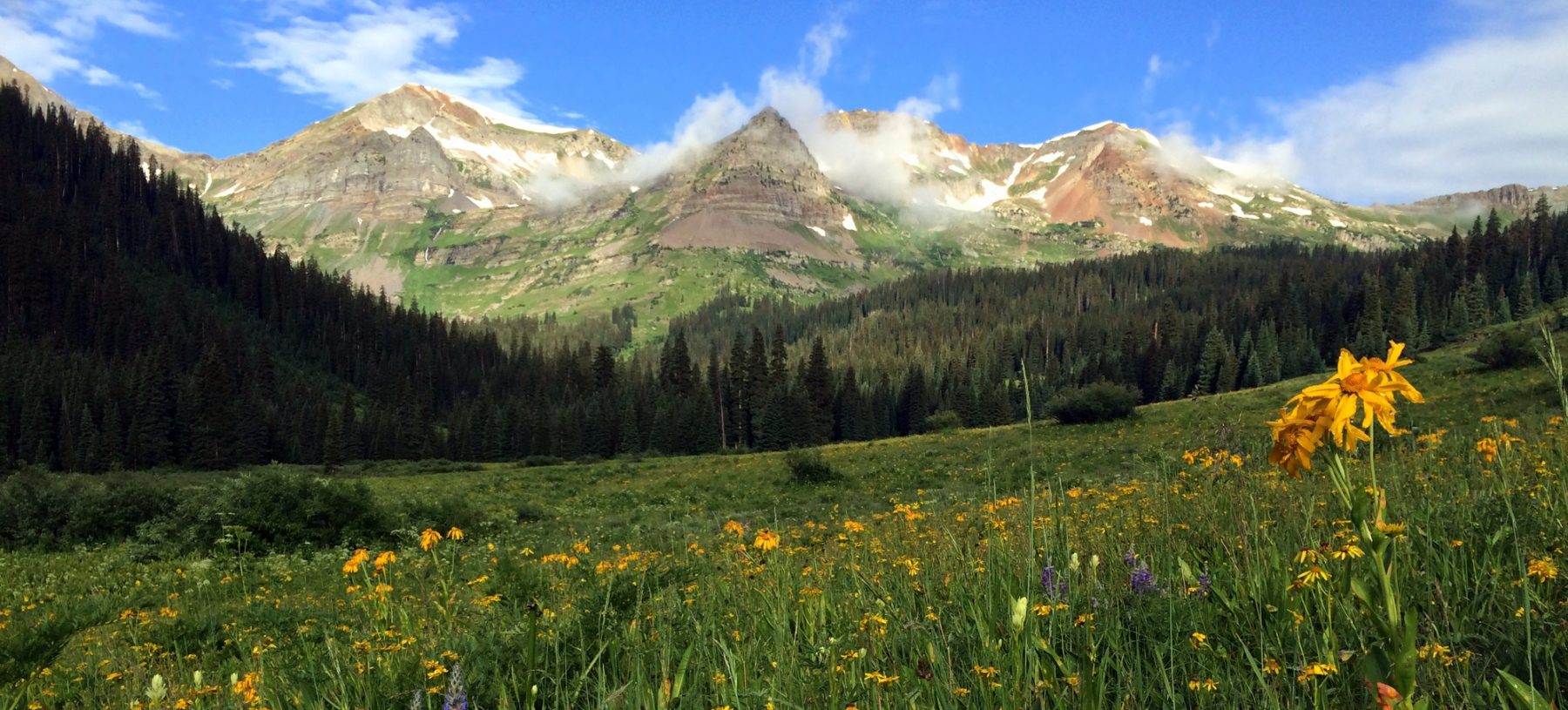

Ann Johnston is Executive Director of the Crested Butte Land Trust (CBLT), a conservation organization that protects land in Crested Butte and Gunnison County, Colorado. Given the focused geographic area in which CBLT operates, Ann and her team must be creative and nimble, and they use a variety methods to protect a diverse array of landscapes, from large-acreage rural ranches to small in-town parcels. CBLT must also balance the competing priorities of Gunnison County’s various stakeholders—ranchers, hikers, bikers, skiers, businesses, and tourists, just to name a few. In an area of the West that is becoming more and more popular, CBLT’s work has never been more important.
I’ve long admired Ann’s ability to think outside the box and effectively execute her plans, so I was excited to get a chance to sit down with her in CBLT’s Crested Butte office. We had a fun conversation in which we discussed her personal connection to conservation, the challenges and opportunities of operating in such a tight-knit community, conservation success stories, specific methods for saving land, advice for aspiring conservationists, and much more– see below for a full list of the topics we discussed. Enjoy!
Click Here to Download on iTunes
—
Click Here to Download on Stitcher
—
—
Episode Notes
Topics Covered
Information Referenced
- Peanut Lake conservation project
- Lower Loop
- Snodgrass Trailhead
- Elevation Outdoors Snodgrass article
- Ed’s Snodgrass Trailhead photos
- Promontory Ranch
- Great Outdoors Colorado (GOCO)
- Colorado conservation tax credits
- Colorado Coalition of Land Trusts (CCLT)
- Quiet: The Power of Introverts in a World That Can’t Stop Talking by Susan Cain
- The Time Traveler’s Wife by Audrey Niffenegger
- Author Nick Hornby
- 180 South
- Let My People Go Surfing: The Education of a Reluctant Businessman by Yvon Chouinard
- Ed’s list of documentaries
- 401 trail
- Oh Be Joyful trail
- Outside Magazine’s backstory on the captain of The Bounty
- CBLT calendars and gear
Andrew Skurka – Blazing a New Trail Across the West
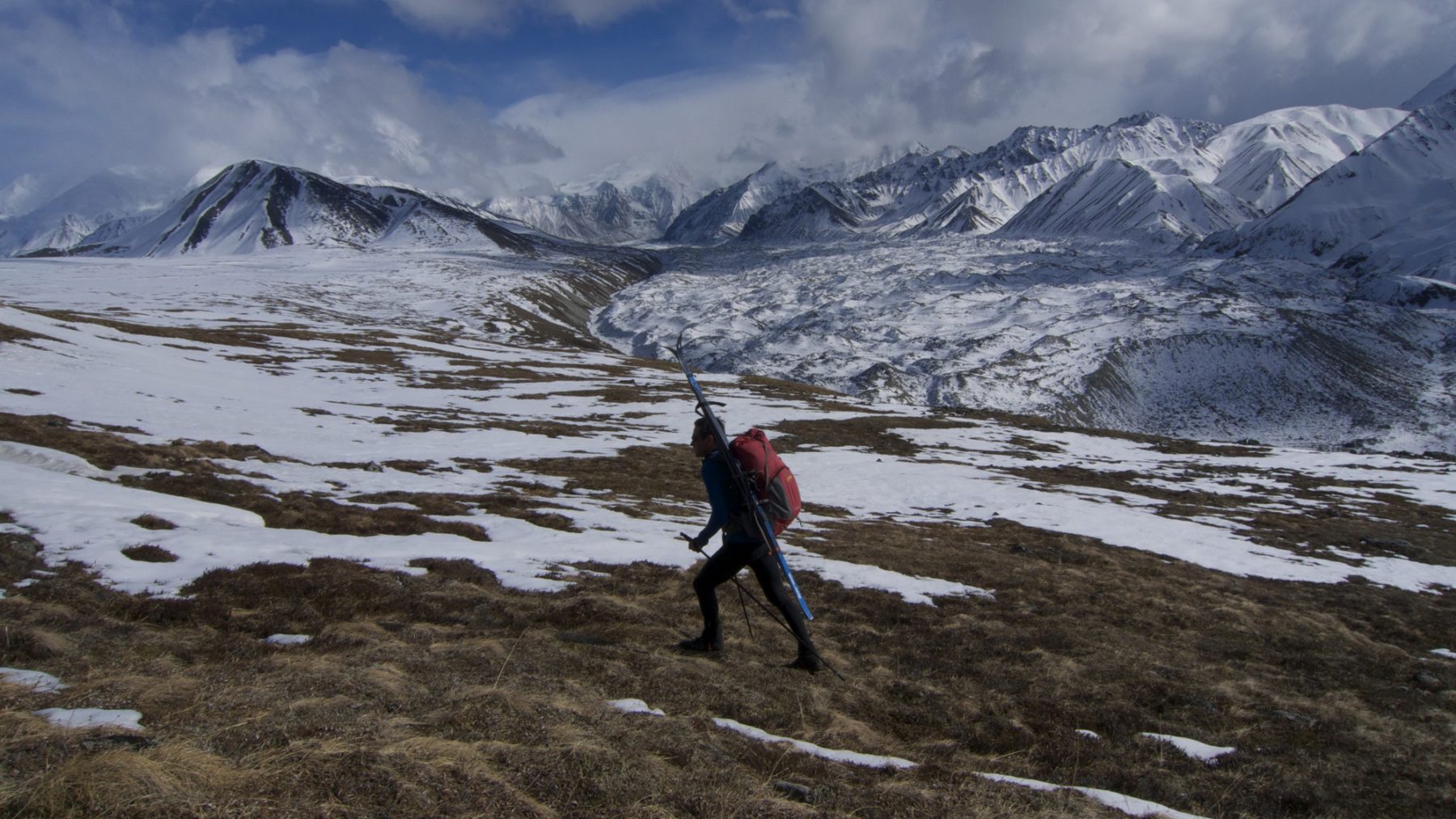
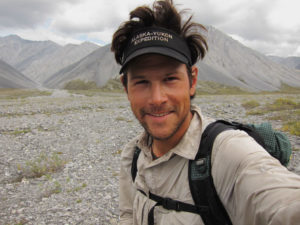
Andrew Skurka is a highly accomplished adventure athlete who is most well known for his long-distance solo backpacking trips, including the 4,700-mile Alaska-Yukon Expedition, the 6,875-mile Great Western Loop, and the 7,775-mile Sea-to-Sea Route. He has also completed countless fast and light trips throughout the Sierras, Wind River Range, Zion National Park, and Appalachian Trail, just to name a few. Andrew has been named “Adventurer of the Year” by both Outside Magazine and National Geographic Adventure, as well as “Person of the Year” by Backpacker Magazine.
Andrew is also a published author, having written The Ultimate Hiker’s Gear Guide: Tools & Tips to Hit the Trail, and he is close to finishing the manuscript for the book’s second edition. He also writes extensively on his personal blog, which is full of detailed, information-rich articles about backpacking, gear reviews, and other endurance-related content. On top of everything else, Andrew is a guide, speaker, and accomplished ultra-runner, having placed second in the Leadville 100 and third in the Run Rabbit Run 100. Just this past weekend (6/25/16), he placed fourth at the San Juan Solstice 50-Mile Trail Run, one of the most difficult 50-milers in the country.
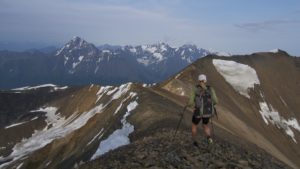
Andrew is a great guy, and we had a very fun conversation. We obviously talk a lot about many of his long-distance backpacking adventures, but we also dig into some of the mental and emotional aspects of traveling through such remote areas for long periods of time completely alone. We talk about his personal background and how he became interested in adventure sports, and also about his decision to forgo a traditional career in finance or consulting to carve out a career centered around the outdoors and adventure. As usual, I ask about his favorite books, favorite documentaries, and favorite locations in the West.
Thanks to Andrew for joining me, and thanks to you for listening to the podcast. Enjoy!
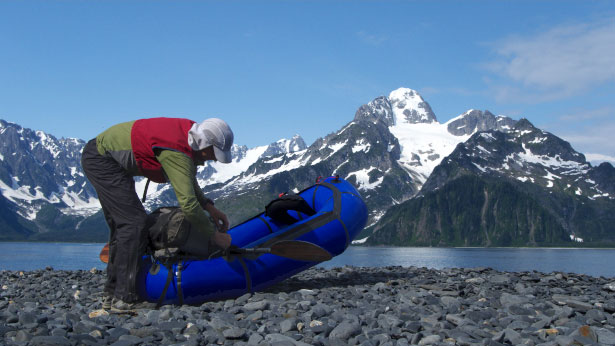
All photographs courtesy of Andrew Skurka
Click Here to Download on iTunes
—
Click Here to Download on Stitcher
—
—
Episode Notes
Topics Covered
Information Referenced
- Andrew Skurka
- Alaska-Yukon Expedition
- Great Western Loop
- Sea-to-Sea Route
- Full list of Andrew’s adventures
- The Ultimate Hiker’s Gear Guide: Tools & Tips to Hit the Trail by Andrew Skurka
- Sierra Designs
- Tussocks
- Tribe: On Homecoming and Belonging by Sebastian Junger
- Duke University
- Camp Carolina
- Appalachian Trail (A.T.)
- 10,000 Hour Rule
- Wind River Range High Route Guide by Andrew Skurka
- Kings Canyon High Basin Route Guide by Andrew Skurka
- Leadville 100
- Run Rabbit Run 100
- San Juan Solstice 50 Mile Trail Run
- The Horizontal Everest: Extreme Journeys on Ellesmere Island by Jerry Kobalenko
- 30 For 30
- Steve Rattner’s blog
- High Country News
- Bedrock & Paradox
- Sierra Nevada Range
- Wind River Range
- Grand Staircase-Escalante National Monument
- Boulder’s Skyline Traverse
The U.S.’s Only Privately Owned 14er
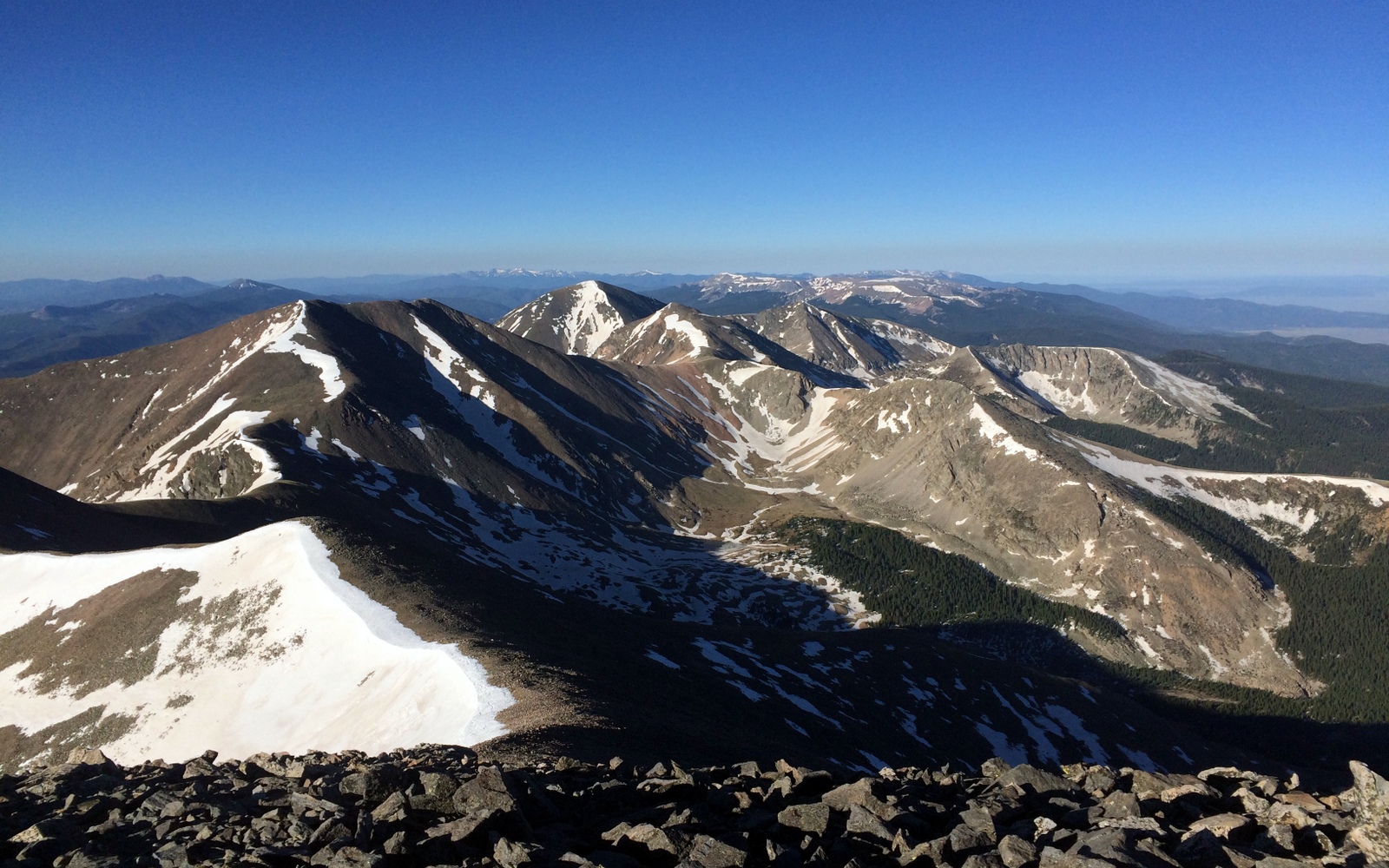
I just published a trip report of my early morning jaunt up Culebra Peak, the only privately owned 14er in the country and the high point of the spectacular 83,000-acre Cielo Vista Ranch. Click over to the Mirr Ranch Group blog to read all about it!
Climbing Cielo Vista’s 14,047-foot Culebra Peak
—
Films for the Mountain Life
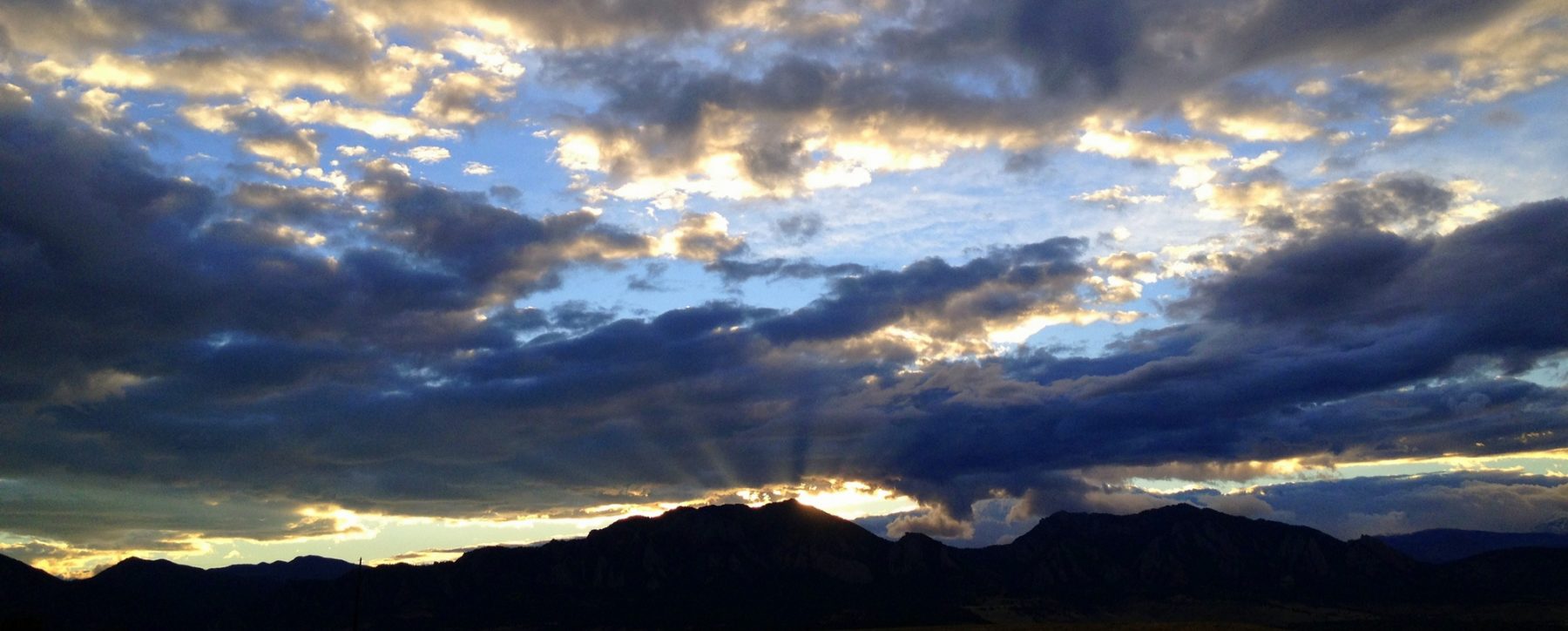
Looking for some mountain-inspired cinematic magic?? Then head over the the Mountain Khakis blog for my recent article “Must-See Documentaries for the Mountain Life.” While you’re there, pick up some new pants, shorts, or shirts! And thanks again to Mountain Khakis for all their help getting the podcast up and running!
Must-See Documentaries for the Mountain Life
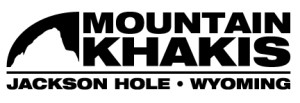
Jim Howell – Conserving and Restoring the World’s Grasslands
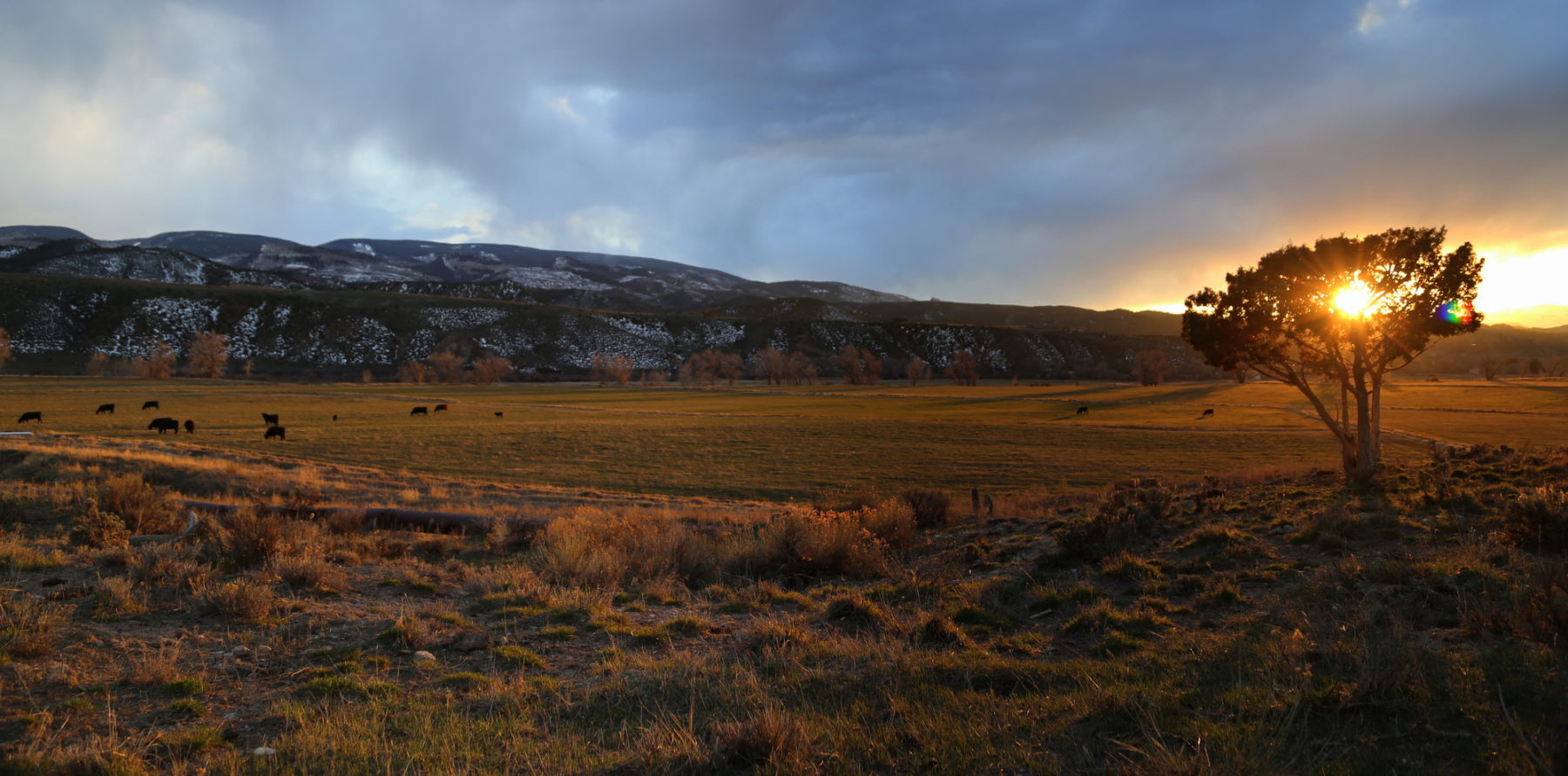
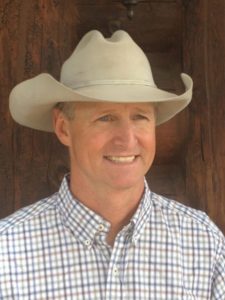
Jim Howell is the CEO of Grasslands LLC, which is the land management arm of the Savory Institute, an organization that Jim co-founded. Both Grasslands and Savory focus on conserving and restoring the world’s grasslands through what they call “Holistic Management.” We discuss the details of Holistic Managment in the interview, but the basic idea is that the world’s grasses evolved to be grazed, and they need to be grazed in a natural manner to be healthy and resilient.
Jim and his team use livestock to mimic natural grazing patterns from hundreds of thousands of years ago, long before the world’s grasslands were covered with people, fences, houses, and cities. Savory and Grasslands’ results speak for themselves—after just a few years of holistic managment, their ranches are measurably healthier, more productive, more biodiverse, and more financially successful.
Even if you have absolutely no interest in grazing or ranches, you still need to listen to this interview, because the work Jim and his team are doing has a positive effect on land, people, plants, animals, and communities all around the world. Anyone who considers themselves to be conservation-minded and loves the outdoors needs to understand Jim’s work. I have no doubt that you’ll gain a new appreciation for the role that livestock needs to play in conserving grasslands around the world. Even if you’re a vegan living in New York City, you’ll gain some valuable insights from Jim’s point of view.
Jim is also an experienced world traveler, an avid reader, and an author, having written one of the best books I’ve read on land and conservation in the West and beyond: For the Love of Land: Global Case Studies of Grazing in Nature’s Image. And on top of all of that, he finds the time to run ultra-marathons and has completed some of the most challenging 50-mile trail races in Colorado.
Between Jim’s professional and personal interests, we had a lot to discuss. It was a fun conversation filled with valuable information, so I hope you enjoy.
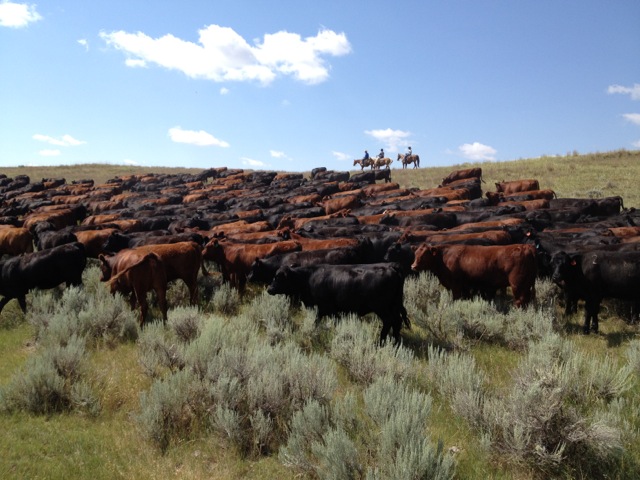
Click Here to Download on iTunes
—
Click Here to Download on Stitcher
—
Click Here to Download on Google Play
—
—
Episode Notes
Topics Covered
Information Referenced
- Grasslands LLC
- Savory Institute
- For the Love of Land: Global Case Studies of Grazing in Nature’s Image by Jim Howell
- Holistic Managment: A New Framework for Decision Making by Allan Savory
- Born to Run: A Hidden Tribe, Superathletes, and the Greatest Race the World Has Never Seen by Christopher McDougall
- Knowledge Rich Ranching by Allan Nation
- Stockman Grass Farmer
- No Risk Ranching: Custom Grazing on Leased Land by Greg Judy
- Natural Born Heroes: How a Daring Band of Misfits Mastered the Lost Secrets of Strength and Endurance by Christopher McDougall
- Senna
Brady Robinson – Climber, Educator, Outdoor Advocate

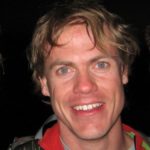
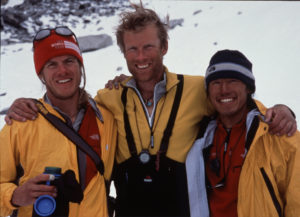
Brady Robinson is the Executive Director of the Access Fund, a conservation and advocacy organization that helps to protect climbing areas throughout the United States. Despite being a relatively small non-profit, the Access Fund’s work has a broad ripple effect far beyond the climbing community and extends into areas of conservation, public lands policy, and general outdoor recreation, just to name a few. Under Brady’s leadership, the Access Fund has been incredibly effective, and as climbing becomes more popular, the its work will only become more important.
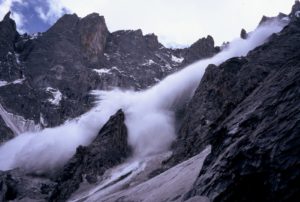
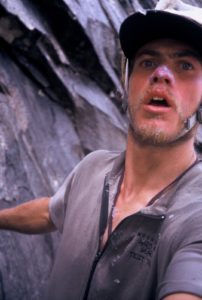
Even if you’re not a climber, you’ll gain some solid insights from this interview, so I hope you enjoy.
All photos courtesy of Brady Robinson
Click Here to Download on iTunes
—
Click Here to Download on Stitcher
—
—
Episode Notes
Topics Covered
Information Referenced
- Brady Robinson
- The Access Fund
- Wilderness Act
- Devil’s Tower National Monument
- The Outdoor Alliance
- Land Trust Alliance
- Outdoor Industry Association
- Brady’s TED talk
- “The Solace of Vertical Places” by Brady Robinson
- Outward Bound
- National Outdoor Leadership School (NOLS)
- VIDEO: 2001 K7 Expedition with Conrad Anker and Jimmy Chin
- Jimmy Chin
- Conrad Anker
- Galen Rowell
- Alex Lowe
- Longs Peak Triathlon
- Mountain biking the Colorado Trail
- Jim Collins
- Good to Great for the Social Sectors by Jim Collins
- Memoirs of the Second World War by Winston Churchill
- The Fog of War
- More info on proposed public lands transfer via Outdoor Alliance
This episode is brought to you by Mountain Khakis. Rugged. Authentic. Reliable. Timeless. What started as a casual conversation at the Shady Lady Saloon in Jackson Hole, WY has become a top-performing mountain-inspired lifestyle apparel brand. Established in 2003, Mountain Khakis quickly became a staple in the wardrobe of everyone from ranch hands to golf pros, those who travel by jet, as well as those who travel by thumb. The Mountain Khakis brand story continues to resonate as it connects to the enthusiast who believes that freedom and rugged adventure is a way of life. Join the conversation @MountainKhakis and www.mountainkhakis.com
Lloyd Athearn – Protecting and Preserving Colorado’s Highest Peaks
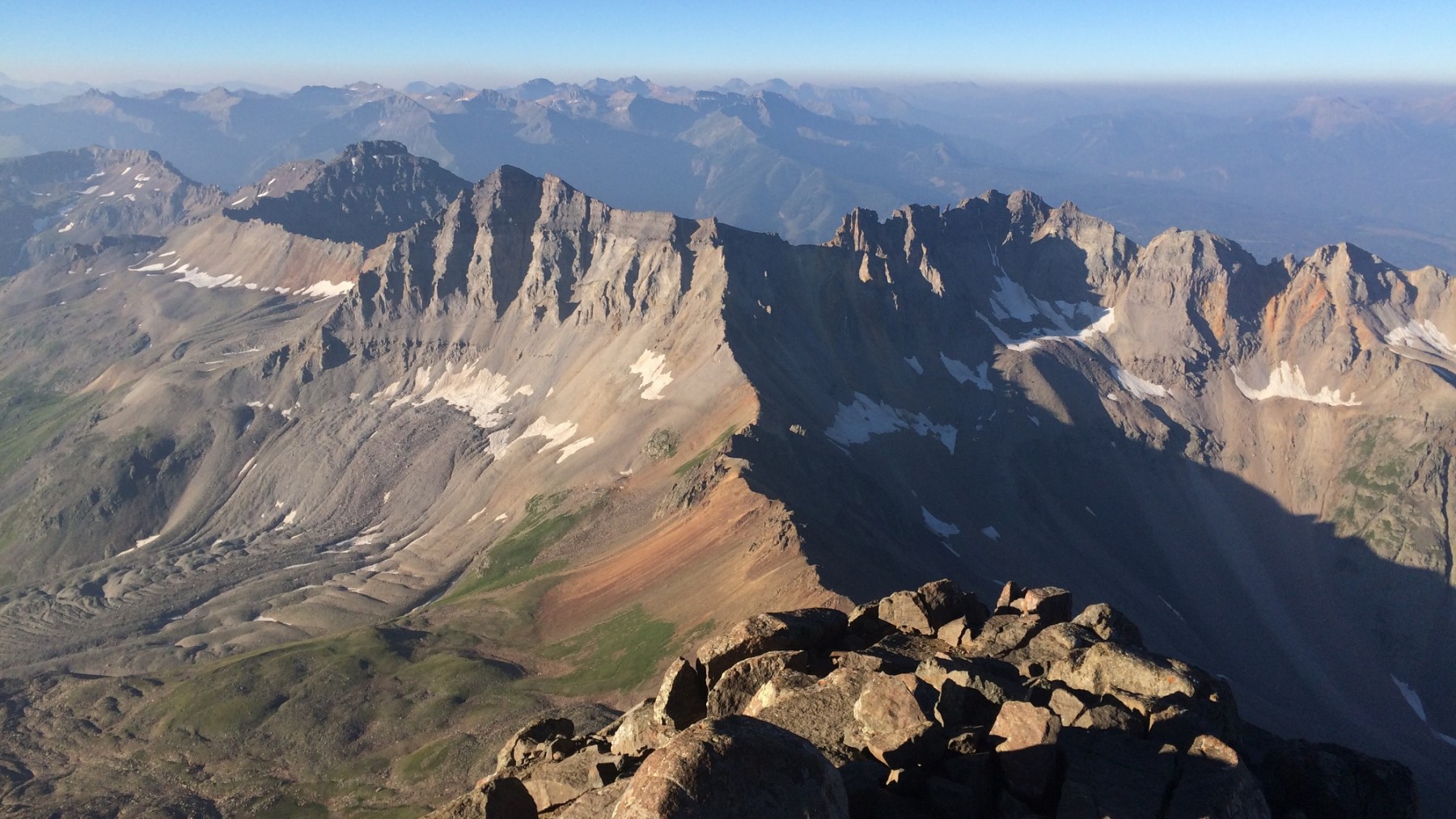

Lloyd Athearn is the Executive Director of the Colorado Fourteeners Initiative (CFI), a non-profit organization whose mission is to protect and preserve the natural integrity of Colorado’s 14,000-foot peaks through active stewardship and public education. CFI’s work includes building and maintaining trails, educating hikers and climbers on best practices in the high country, conserving the native alpine tundra ecosystem, and generally helping to ensure that these popular mountains are not inadvertently “loved to death” through overuse.
Much of Lloyd’s career has centered around mountains, so we had a fun and wide-ranging conversation with topics including 14ers, climbing adventures, ecology, books, advice to first-time hikers, and plenty more. Lloyd is a super interesting guy who’s doing very important work, so I hope you enjoy the conversation as much as I did!
Click Here to Download on iTunes
—
Click Here to Download on Stitcher
—
—
This episode is brought to you by Mountain Khakis. Rugged. Authentic. Reliable. Timeless. What started as a casual conversation at the Shady Lady Saloon in Jackson Hole, WY has become a top-performing mountain-inspired lifestyle apparel brand. Established in 2003, Mountain Khakis quickly became a staple in the wardrobe of everyone from ranch hands to golf pros, those who travel by jet, as well as those who travel by thumb. The Mountain Khakis brand story continues to resonate as it connects to the enthusiast who believes that freedom and rugged adventure is a way of life. Join the conversation @MountainKhakis and www.mountainkhakis.com
Episode Notes
Topics Covered
Information Referenced
- Colorado Fourteeners Initiative (CFI)
- CFI – Facebook
- CFI – Youtube
- CFI – Instagram
- CFI – Twitter
- 14ers.com
- Trail Inventory Example: Capitol Peak
- CFI Partner – REI
- CFI Partner – Osprey
- Cielo Vista Ranch / Culebra Peak
- American Alpine Club
- Astoria: John Jacob Astor and Thomas Jefferson’s Lost Pacific Empire: A Story of Wealth, Ambition, and Survival by Peter Stark
- Antartica – A Year on Ice
- Tuolumne Meadows
- Leave No Trace
Changing Seasons in Crested Butte
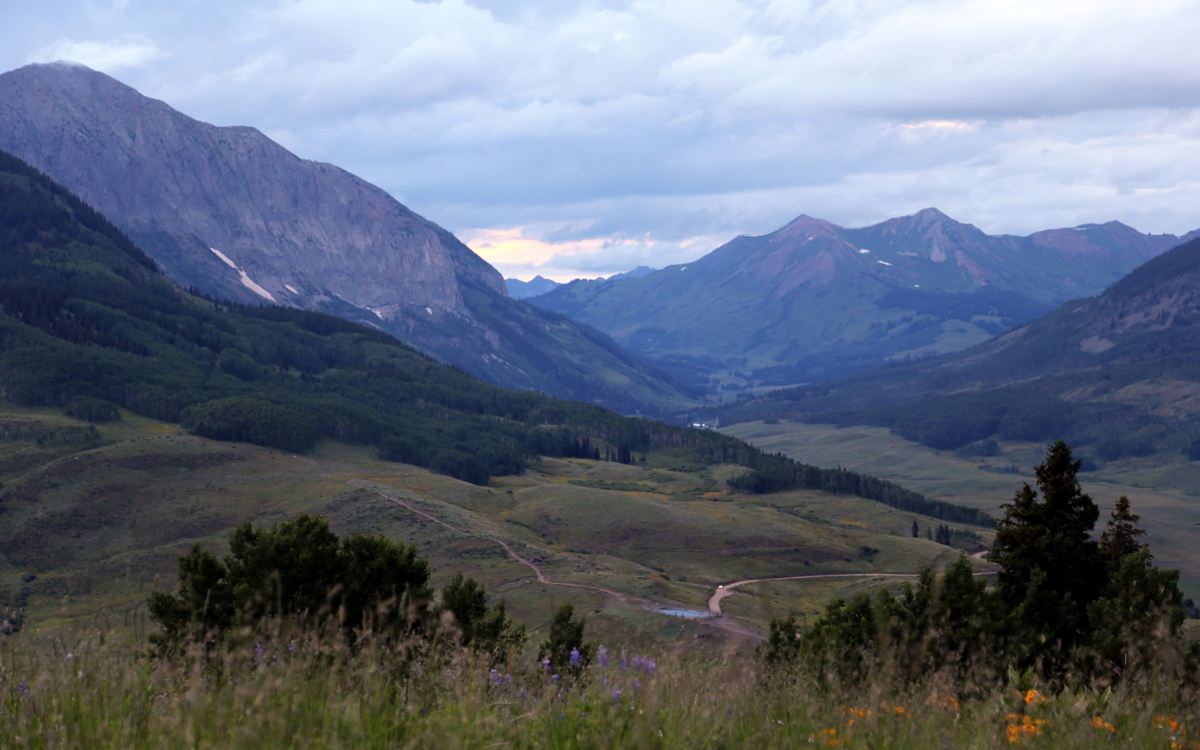
Follow the link below to the Mirr Ranch Group blog for updates on all the happenings in “Colorado’s Last Great Ski Town”– Crested Butte, Colorado. With another excellent ski season in the books, the resort is hard at work preparing for what is sure to be another fun summer in one of my favorite towns in the West!
Changing Seasons in Crested Butte, Colorado
—
Connie Sciolino – Building Stronger & Tougher Outdoor Athletes
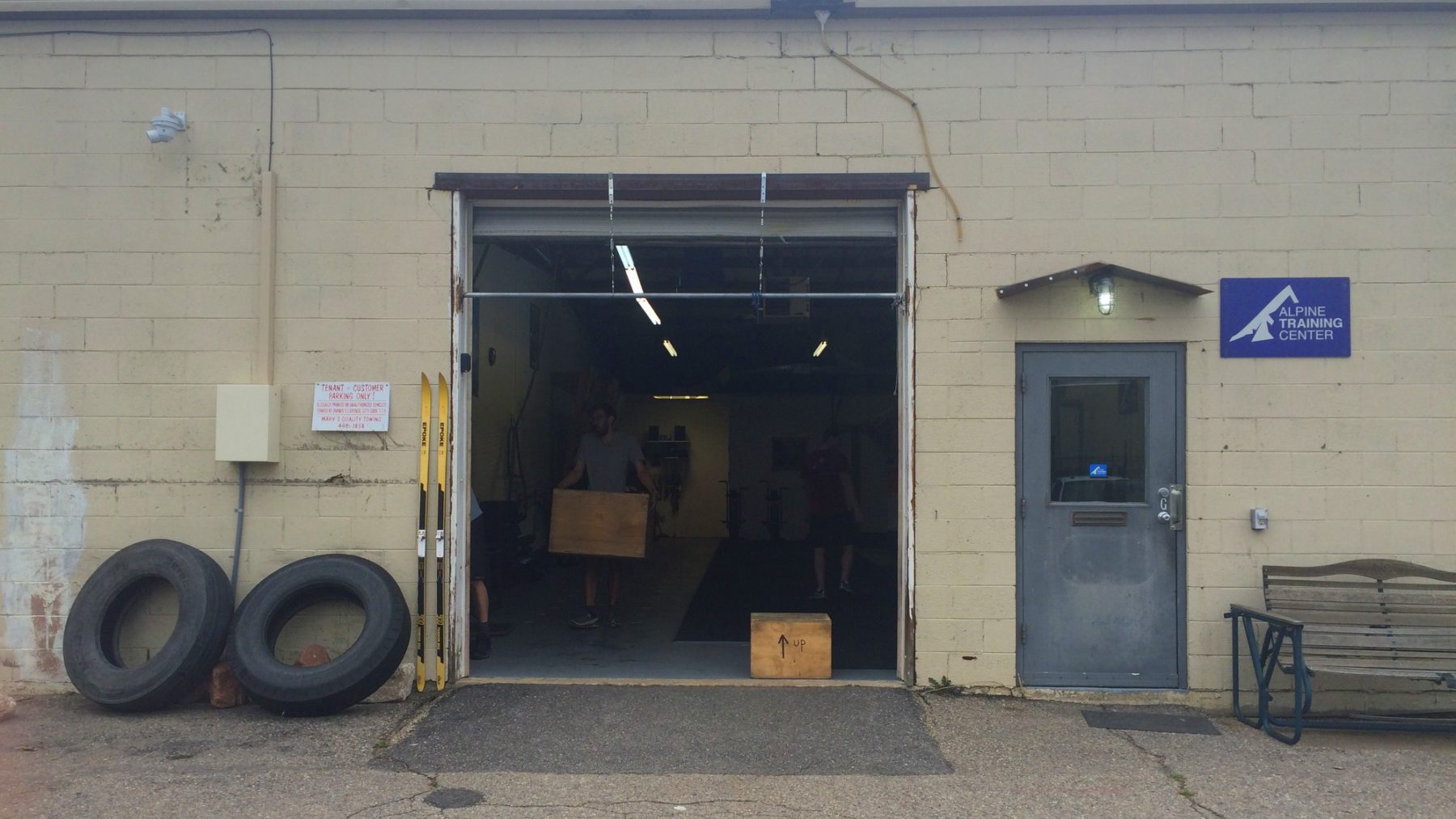
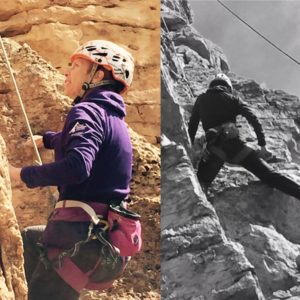
Connie Sciolino is the owner and head coach at The Alpine Training Center in Boulder, Colorado. The ATC is a no-frills gym on the outskirts of town that helps outdoor athletes become better skiers, climbers, runners, and bikers through strength training. Connie trains everyone from professional athletes to weekend warriors, including one of the climbers in the hit mountaineering documentary, Meru.
The workouts are grueling, both physically and mentally. But her clients’ results speak for themselves—committed athletes leave the gym stronger, tougher, more resistant to injury, and better equipped to tackle the challenges of the high mountains. Thanks to her diverse collection of educational, professional, athletic, and outdoor experiences, Connie is setting a new standard for training for mountain-focused sports.
Click Here to Download on iTunes
—
Click Here to Download on Stitcher
—
—
This episode is brought to you by Mountain Khakis. Rugged. Authentic. Reliable. Timeless. What started as a casual conversation at the Shady Lady Saloon in Jackson Hole, WY has become a top-performing mountain-inspired lifestyle apparel brand. Established in 2003, Mountain Khakis quickly became a staple in the wardrobe of everyone from ranch hands to golf pros, those who travel by jet, as well as those who travel by thumb. The Mountain Khakis brand story continues to resonate as it connects to the enthusiast who believes that freedom and rugged adventure is a way of life. Join the conversation @MountainKhakis and www.mountainkhakis.com
Episode Notes
Topics Covered
- The Alpine Training Center
- ATC – Facebook
- ATC – Instagram
- Mountain Athlete
- Sandbag Getups
- Curtis Ps
- Exum Guides
- The Grand Traverse
- Gym Jones
- Meru
- Training for the New Alpinism: A Manual for the Climber as Athlete by Steve House
- Beyond the Mountain by Steve House
- Excellent Yosemite Videos
- Valley Uprising – Yosemite’s Rock Climbing Revolution
- The Access Fund
Spencer Williams – From River Guide to Water Innovator
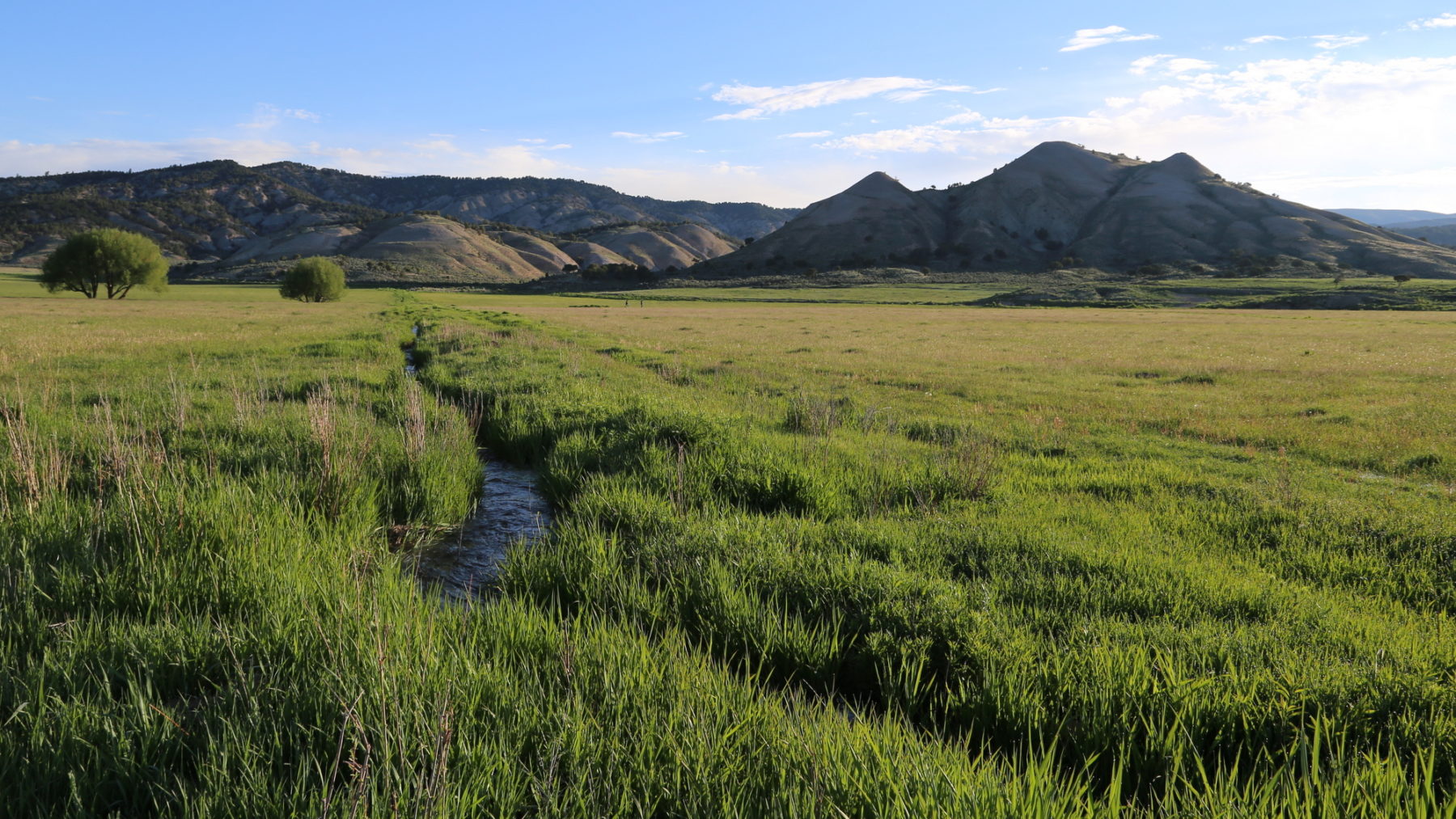
Spencer Williams spent his summers as a river guide in Colorado’s Upper Arkansas River Valley, and those experiences on the water led him to law school and into a career as a water rights attorney. He now works for Ponderosa Advisors, advising clients on water rights and water markets across the American West. Spencer also works with Ponderosa’s new software platform Water Sage, an innovative software program that is redefining water research across the West.
In this episode, we dig into the details of water in the West—What exactly a what right is, how water rights can be severed from the land, and the history of water as a property right. We talk about water as an investment, and how big money is currently rushing into the West’s water markets. We discuss Spencer’s work at Ponderosa and Water Sage, and we also tell some stories from his days as a river guide. It was a fun and informative conversavation about an important topic. I hope you enjoy!
Click Here to Download on iTunes
—
Click Here to Download on Stitcher
—
—
This episode is brought to you by Mountain Khakis. Rugged. Authentic. Reliable. Timeless. What started as a casual conversation at the Shady Lady Saloon in Jackson Hole, WY has become a top-performing mountain-inspired lifestyle apparel brand. Established in 2003, Mountain Khakis quickly became a staple in the wardrobe of everyone from ranch hands to golf pros, those who travel by jet, as well as those who travel by thumb. The Mountain Khakis brand story continues to resonate as it connects to the enthusiast who believes that freedom and rugged adventure is a way of life. Join the conversation @MountainKhakis and www.mountainkhakis.com
Episode Notes
Topics Covered
- Ponderosa Advisors
- Water Sage
- Upper Arkansas River Valley
- Mount Princeton
- The Emerald Mile: The Epic Story of the Fastest Ride in History Through the Heart of the Grand Canyon by Kevin Fedarko
- Colorado Water Law for Non-Lawyers by P. Andrew Jones
- Cadillac Desert: The American West and its Disappearing Water by Marc Reisner
- The Grapes of Wrath and East of Eden by John Steinbeck
- 30 for 30
Erik Glenn – Saving Colorado, One Ranch at a Time
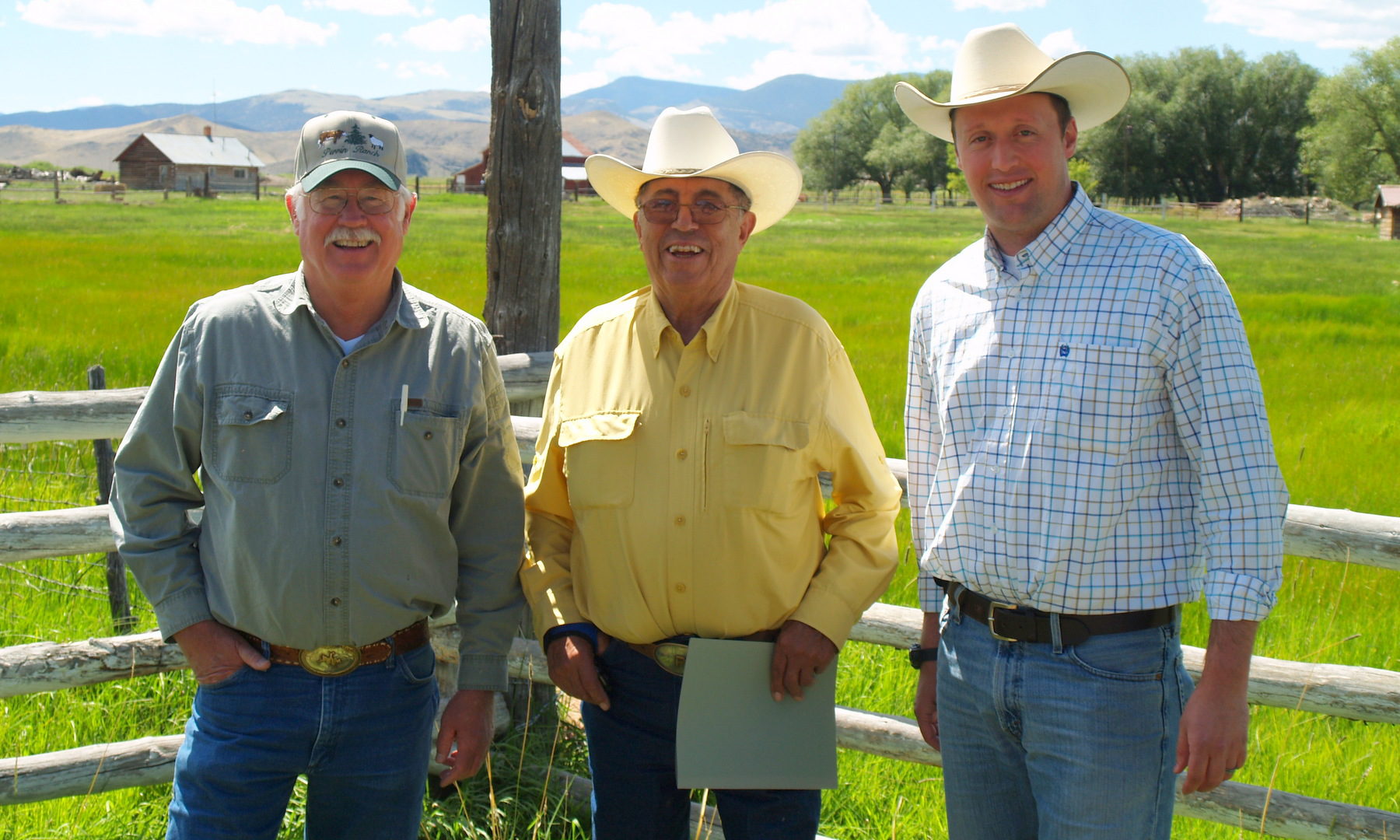
Erik Glenn is the Executive Director of the Colorado Cattlemen’s Agricultural Land Trust, a land conservation organization that has protected over 465,000 acres of working ranches throughout the state of Colorado. In this episode, Ed and Erik discuss a wide array of topics including the importance of keeping ranches in agricultural production, the basics of land conservation in the West, Colorado’s role as a leader in national land conservation, Erik’s family history as ranchers, and much more.
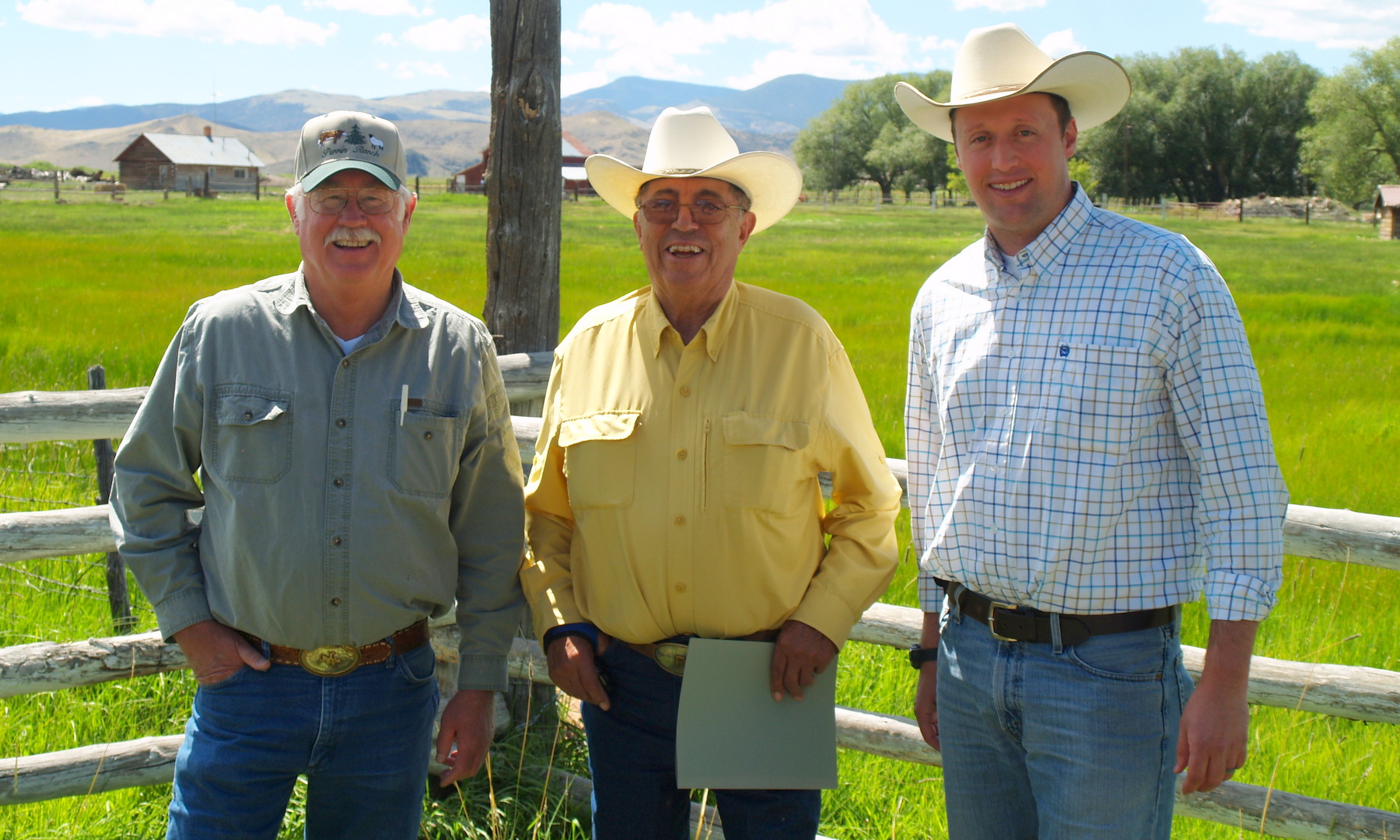
Erik was the perfect first guest for the podcast, so I hope you enjoy the conversation as much as I did!
Click Here to Download on iTunes
—
Click Here to Download on Stitcher
—
—
This episode is brought to you by Mountain Khakis. Rugged. Authentic. Reliable. Timeless. What started as a casual conversation at the Shady Lady Saloon in Jackson Hole, WY has become a top-performing mountain-inspired lifestyle apparel brand. Established in 2003, Mountain Khakis quickly became a staple in the wardrobe of everyone from ranch hands to golf pros, those who travel by jet, as well as those who travel by thumb. The Mountain Khakis brand story continues to resonate as it connects to the enthusiast who believes that freedom and rugged adventure is a way of life. Join the conversation @MountainKhakis and www.mountainkhakis.com
Episode Notes
Topics Covered
- Colorado Cattlemen’s Agricultural Land Trust
- Colorado Cattlemen’s Association
- The Worst Hard Time: The Untold Story of Those Who Survived the Great American Dust Bowl by Timothy Egan
- For the Love of Land: Global Case Studies of Grazing in Nature’s Image by Jim Howell
- Responsible Grazing – The Foundation of A Healthy Ranch Ecosystem by Ed Roberson
- Great Outdoors Colorado (“GOCO”)
- Lessons from an Anti-Boomer by Ed Roberson
- Video on the Greater Sage Grouse conservation effort
- River of Doubt: Theodore Roosevelt’s Darkest Journey by Candice Millard
- Atlas Shrugged by Ayn Rand
- How to Win Friends and Influence People by Dale Carnegie
- Unbranded
- Nothing Daunted: The Unexpected Education of Two Society Girls in the West by Dorothy Wickenden
- Forever Colorado
Lessons from an “Anti-Boomer”
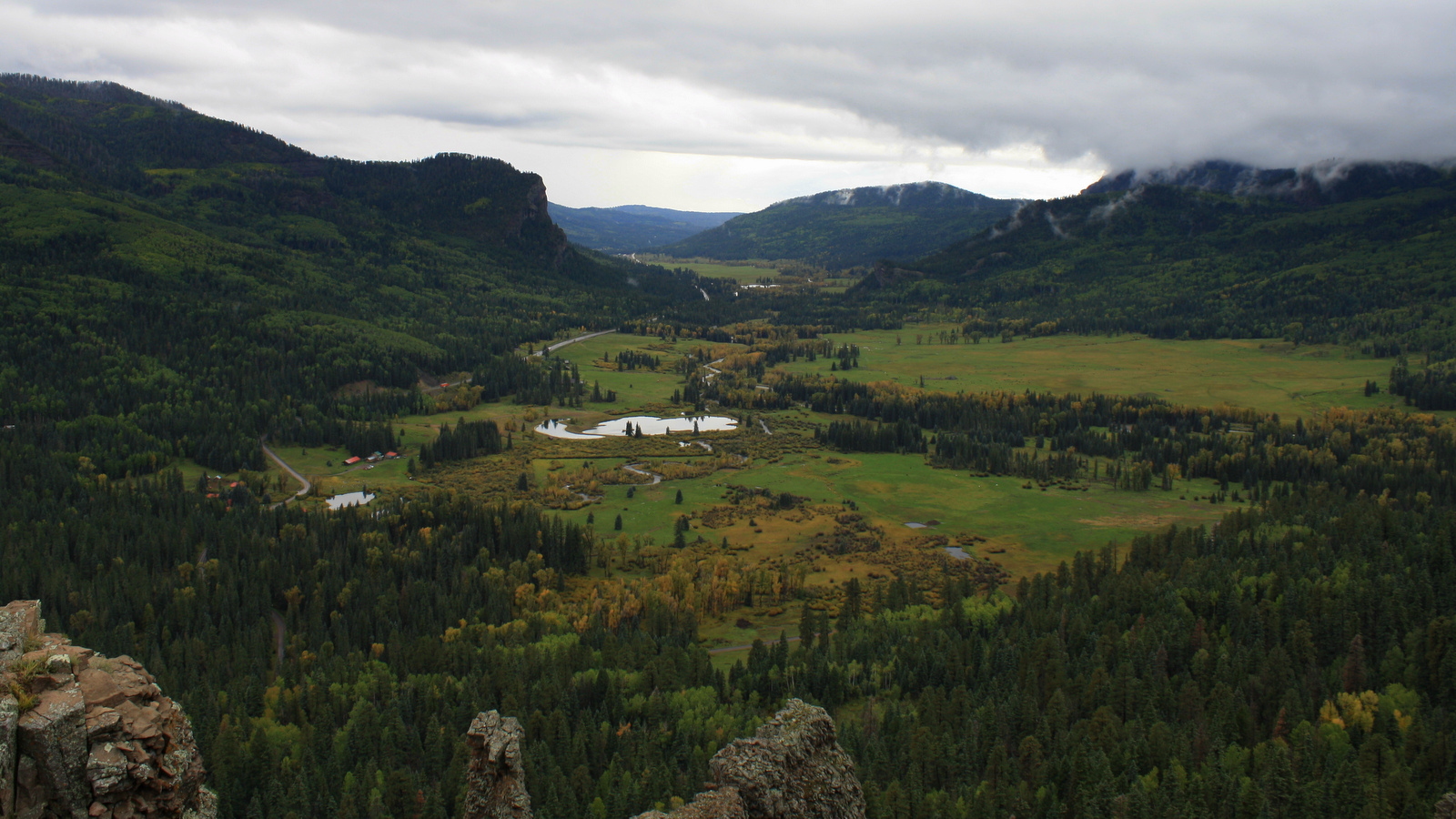
This article originally appeared in “Crossroads, Spring 2016 Issue,” the Colorado Cattlemen’s Agricultural Land Trust newsletter. You can download a pdf of the article here, watch CCALT’s “Forever Colorado” video here, and support CCALT’s efforts here.
The great western author Wallace Stegner believed that Americans generally fit into one of two categories—“Boomers” or “Stickers.” Boomers are “those who pillage and run” and want “to make a killing and end up on Easy Street.” Stickers are just the opposite—they are “motivated by affection, by such a love for place and its life that they want to preserve it and remain in it.”1
Since America’s westward expansion, the West has always attracted more than its fair share of Boomers. Like moths to a flame, Boomers have flocked to the West for its expansive landscapes and natural resources that offer a potential one-way ticket to Easy Street. Western history is full of flamboyant, infamous Boomers – from trappers to miners, from developers to oilmen – who have descended on an area and, as quickly as they could, extracted every last bit of value from the land. When the resource (pelts, gold, land, oil) was diminished to the point of unprofitability, the Boomers picked up, moved the entire operation to a new area, and repeated the process.
Ranchers, however, are the anti-Boomers. Since the first cattle drives came West, ranchers have relied completely on their specific parcel of land to sustain their operations year after year, generation after generation. Boomers have come and gone time and again, but ranchers have remained steadfast, respectfully stewarding their ranches, ensuring that they are healthy and productive from one year to the next.
Ranchers are Stickers. They are in it for the long haul, and they must ensure that their finite natural resources (land, grass, water) not only produce this current year, but every year for the next 50 years. The idea of extracting every last drop of value out of a ranch with no regard for the future is a recipe for overgrazing, an unsustainable herd, and, ultimately, financial ruin. The Boomer mentality is simply incompatible with ranching.
Yes, ranchers are motivated by profit, but for many ranchers it seems that financial success is just a tool that serves their primary motivation – a desire to continue living and working on land that they love, preserving a ranching heritage that is slowly disappearing. The Sticker description seems to fit perfectly—ranchers have “such a love for place and its life that they want to preserve it and remain in it.”
CCALT plays a vital role in helping Colorado ranchers remain true to their Sticker way of life. Through its conservation easements, CCALT ensures that Colorado’s productive lands will remain true working ranches forever. No matter what type of economic pressure the Boomers dole out, ranchers will be able to continue doing their meaningful work in places they love and respect.
For the non-rancher, it is important to understand that the positive impacts of protecting these working ranches go far beyond agriculture. Conserved ranches benefit families, communities, economies, water resources, and the outdoor-centric lifestyle that makes Colorado so special. Any Coloradan who loves the state’s expansive open spaces and scenic vistas should support CCALT and its critical work protecting ranches and ranching heritage.
—-
1 Wendell Berry, It All Turns on Affection (2012)
Books for the Mountain Life, Part 2
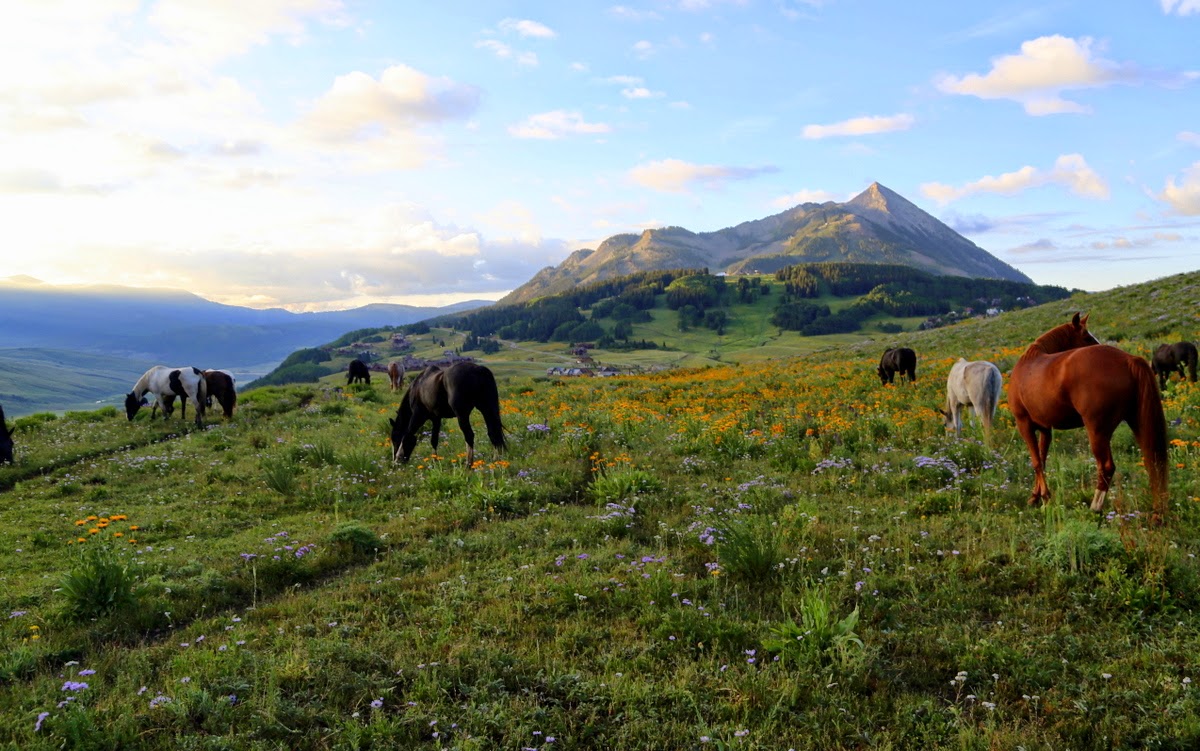
Mountain Khakis just posted my newest blog, “Books for the Mountain Life, Part 2.” It’s a follow-up to a similar article I wrote in early 2015. Head over to their blog to check it out, and, if you are looking for more good book ideas, be sure to sign up for my bi-monthly reading recommendations email list.
Books for the Mountain Life, Part 2
—
Teddy Roosevelt vs. The Squirrels
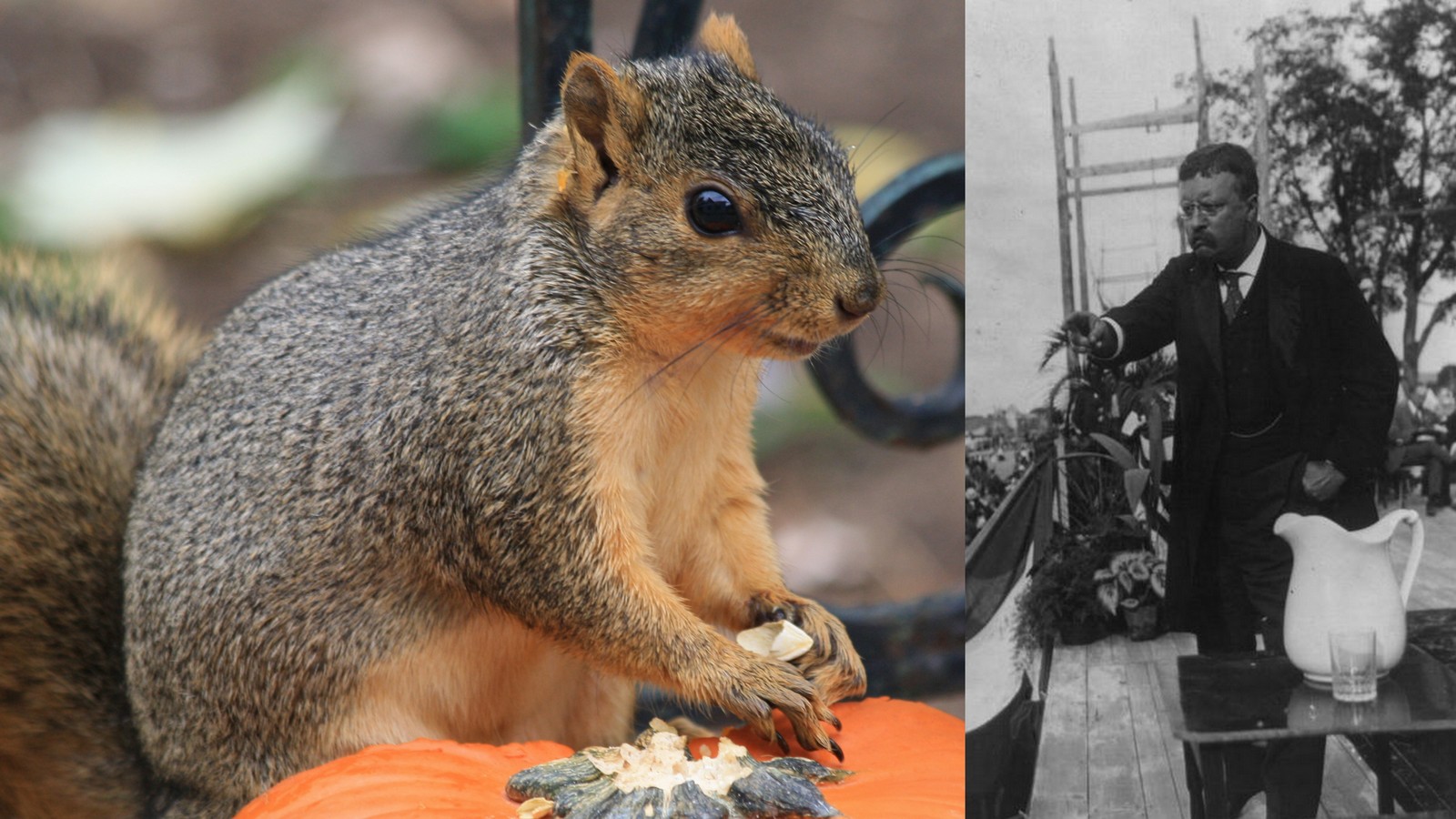
It’s no secret that Theodore Roosevelt lived a life that revolved around the outdoors and nature. Even during his years in the White House, he would commonly disappear into the American West for weeks at a time, hunting, riding, and exploring some of the country’s most rugged landscapes.
A few years into his Presidency, TR’s wife Edith purchased him a small cabin located just off the beaten path about 14 miles south of Charlottesville, VA. The idea was to provide TR with a convenient, closer-to-home basecamp for his outdoor pursuits, so he wouldn’t have to run off to Colorado every time he needed a fix of the natural world. The rustic two-story cabin was located on 15 heavily wooded acres that were brimming with birds and wildlife. In 1911, after TR’s Presidency had ended, the Roosevelts expanded Pine Knot by pruchasing an additional 75 acres.
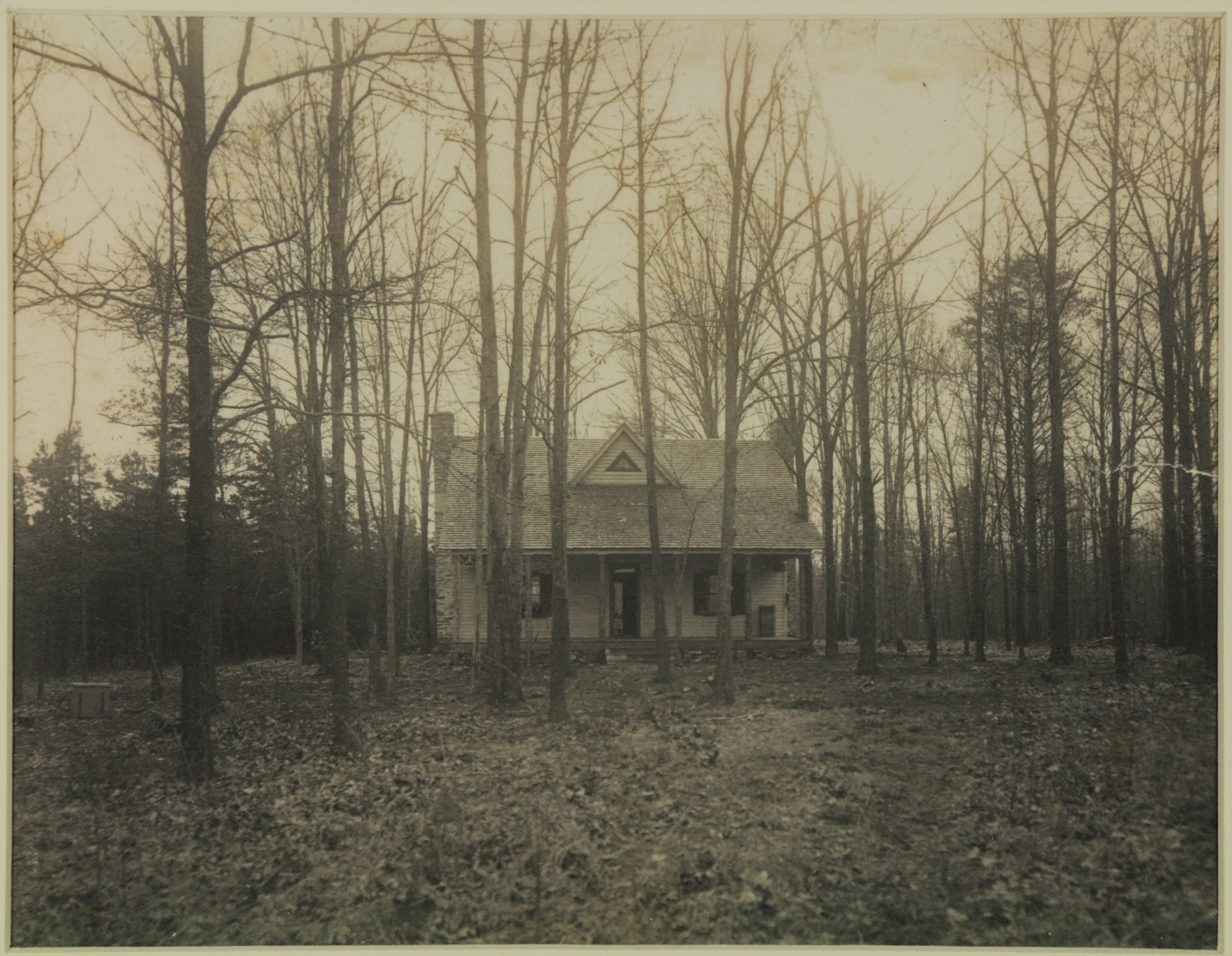
TR used Pine Knot as a place to unwind and rest—or at least his hyperactive version of rest. A typical day would have him up between 3 and 5AM, exploring the property before daylight, either hunting turkey or simply observing and cataloging the area’s diverse birdlife. His days were spent writing articles and catching up on his correspondence–TR wrote well over 150,000 letters during his lifetime. He ate a lot too, routinely throwing down a dozen eggs for breakfast and personally cooking fried chicken dinners over a kerosene stove for Edith and himself.
In order to fully remove himself from the grind of the White House, TR refused secret service protection while at Pine Knot. According to David Brinkley, author of the excellent book The Wilderness Warrior: Theodore Roosevelt and the Crusade for America, TR “instead chose to sleep with a pistol at his bedside, thumbing it open to check the bullet chambers before blowing out the light. A real man, Roosevelt believed, protected his own family in the woods.”
Anyone who spent a night at Pine Knot quickly learned that the mountain retreat was just a step or two above camping under the stars. There was a live hardwood tree growing inside the house, and a number of critters called the cabin home. In the letter below to his son Archie, TR describes a memorable encounter between an overnight guest and some of Pine Knot’s resident indoor wildlife.
White House, May 10, 1908.
DEAREST ARCHIE:
Mother and I had great fun at Pine Knot. Mr. Burroughs, whom I call Oom John, was with us and we greatly enjoyed having him. But one night he fell into great disgrace! The flying squirrels that were there last Christmas had raised a brood, having built a large nest inside of the room in which you used to sleep and in which John Burroughs slept. Of course they held high carnival at night-time. Mother and I do not mind them at all, and indeed rather like to hear them scrambling about, and then as a sequel to a sudden frantic fight between two of them, hearing or seeing one little fellow come plump down to the floor and scuttle off again to the wall. But one night they waked up John Burroughs and he spent a misguided hour hunting for the nest, and when he found it took it down and caught two of the young squirrels and put them in a basket. The next day under Mother’s direction I took them out, getting my fingers somewhat bitten in the process, and loosed them in our room, where we had previously put back the nest. I do not think John Burroughs profited by his misconduct, because the squirrels were more active than ever that night both in his room and ours, the disturbance in their family affairs having evidently made them restless!
The idea of a sitting President enthusiastically encouraging a family of squirrels to live in his house is absolutely hilarious. It’s impossible to envision any President since TR happily suffering bitten fingers while handling wild rodents, not to mention purposefully releasing the varmints into his own bedroom. Can you imagine an awkward, bumbling Richard Nixon flailing around a mountain cabin in his beach-walking wingtips, trying in vain to round up a family of flying squirrels? (Coincidentally, I recently heard that a family of squirrels lives in Trump’s hair, but that’s a story for a different blog post.)
To put this story in perspective, the squirrels were actually relatively tame compared to some of the other animals that roamed the Roosevelt residences. There are numerous examples (perhaps I’ll detail them in a future post), but my favorite was TR’s pet badger “Josiah” that wandered freely throughout the White House, biting guests’ legs and sometimes drawing blood.
For more information on Pine Knot, TR’s menagerie of crazy pets, and his general love of the natural world, check out the sources below. On a somewhat related note, follow this link for a hysterical quote about TR’s seething hatred of those “bleating idiots” known as sheep.
—
Sources:
- Brinkley, D. (2010). The Wilderness Warrior: Theodore Roosevelt and the Crusade for America. New York, NY: HarperCollins Publishers.
- Roosevelt, T. (2013). Letters to his Children. CreateSpace Independent Publishing Platform.
- Photo: Exterior of Pine Knot. n.d. Theodore Roosevelt Birthplace National Historic Site.http://www.theodorerooseveltcenter.org/Research/Digital-Library/Record.aspx?libID=o286579. Theodore Roosevelt Digital Library. Dickinson State University.
LandThink – Conservation Easement Article
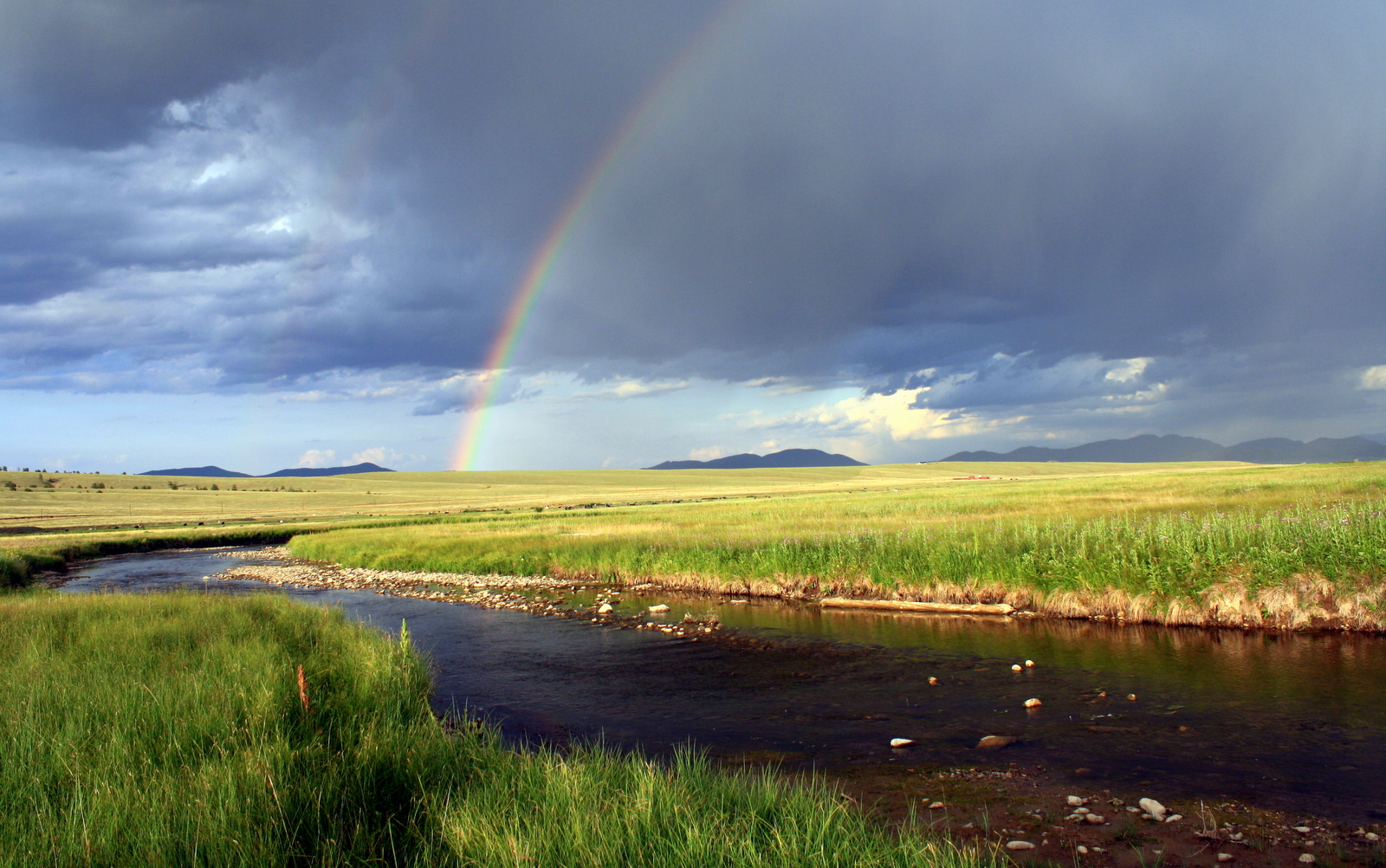
LandThink.com just republished last week’s conservation easement article. I always appreciate LandThink’s commitment to spreading high-quality, interesting land-related content. I encourage anyone working in land-related industries to submit articles for publication. The more knowledgeable professionals to contribute, the more valuable and useful the site becomes!
LandThink: Conservation Easements – Six Common Misconceptions
—
